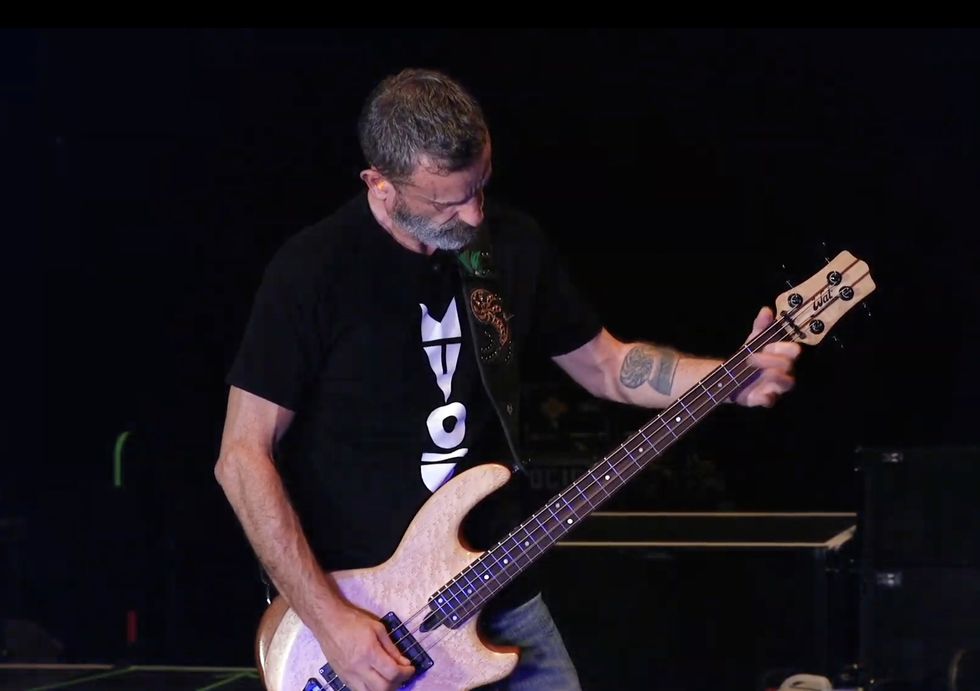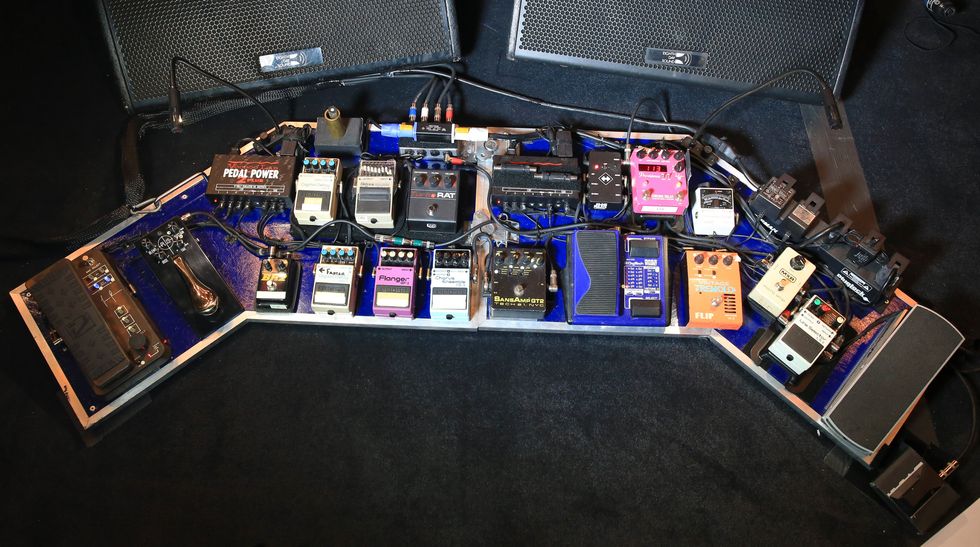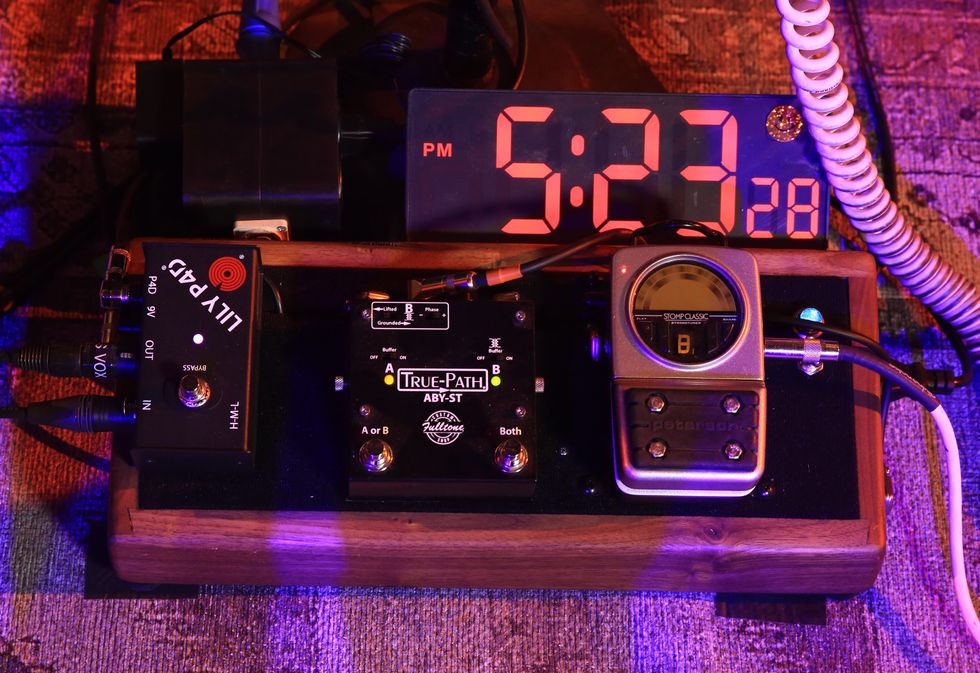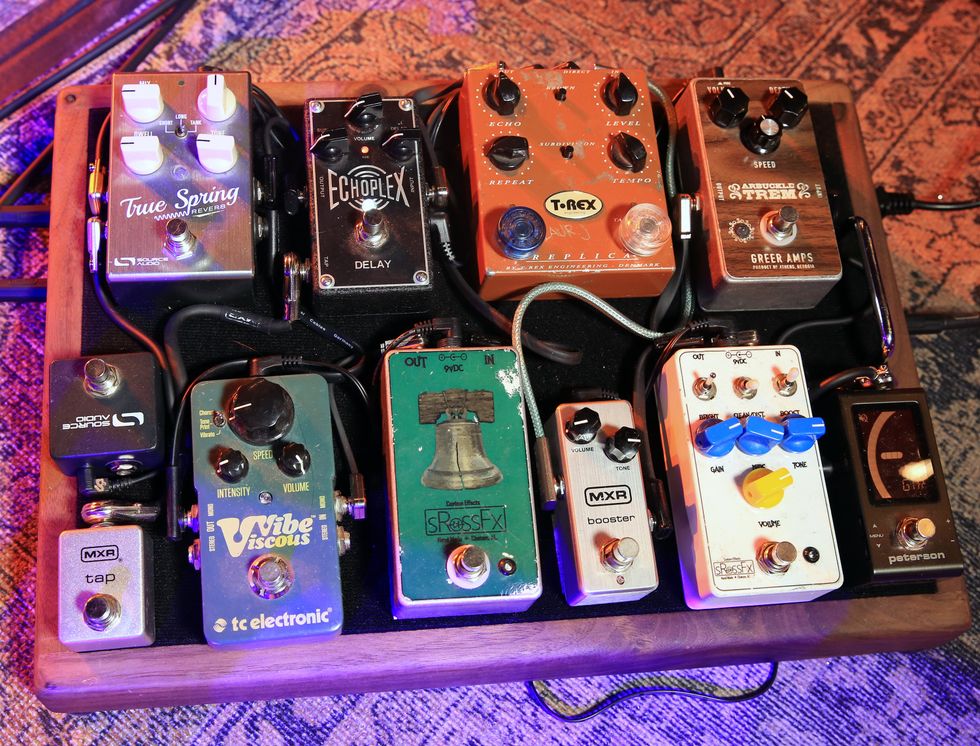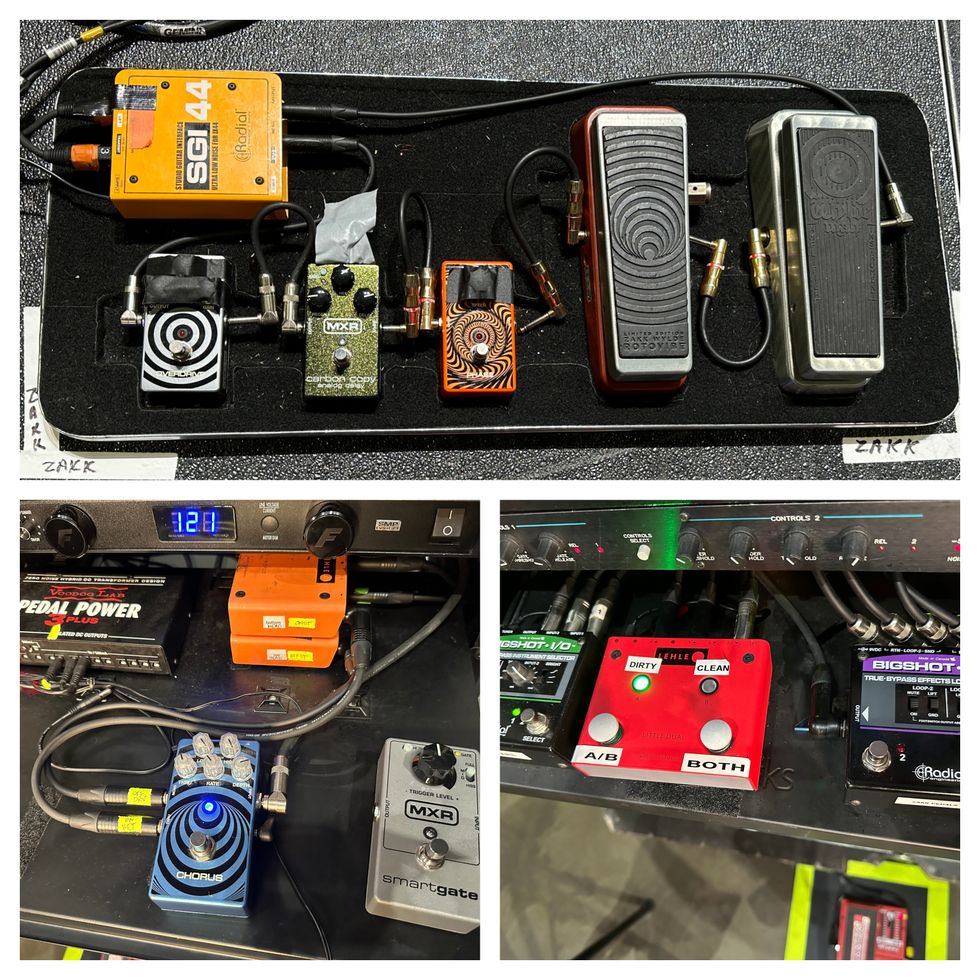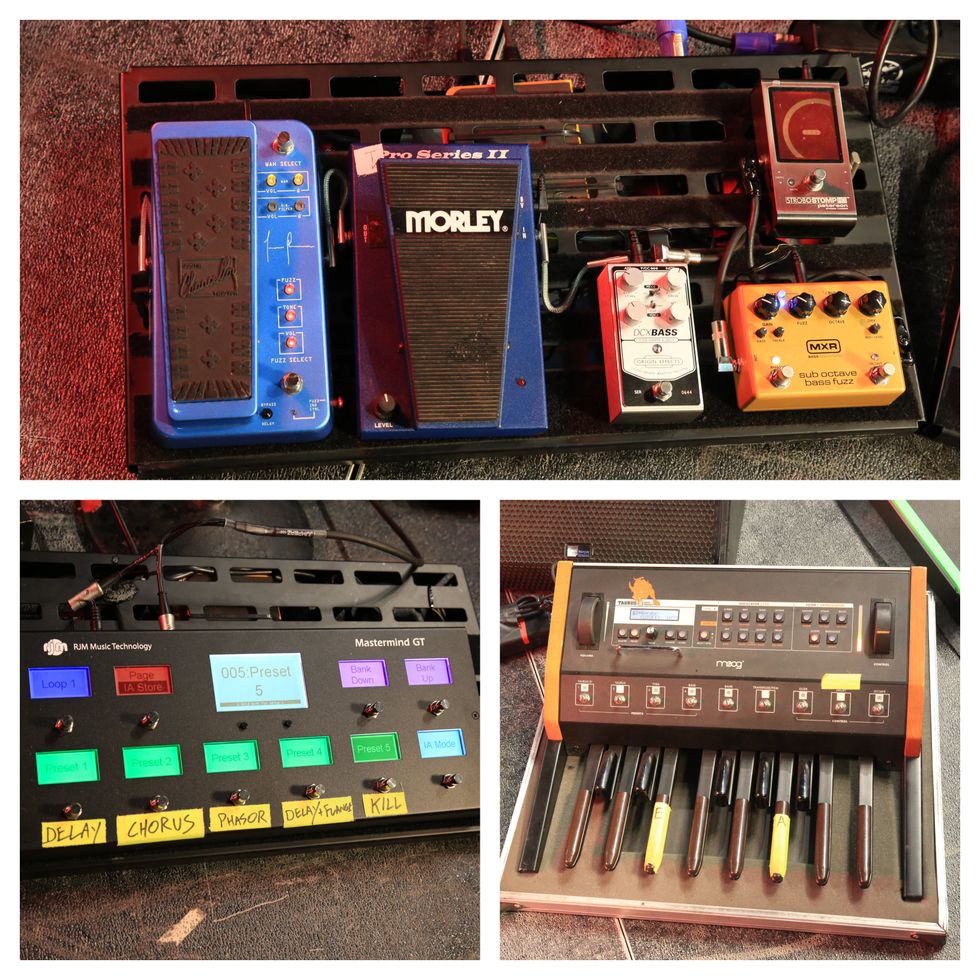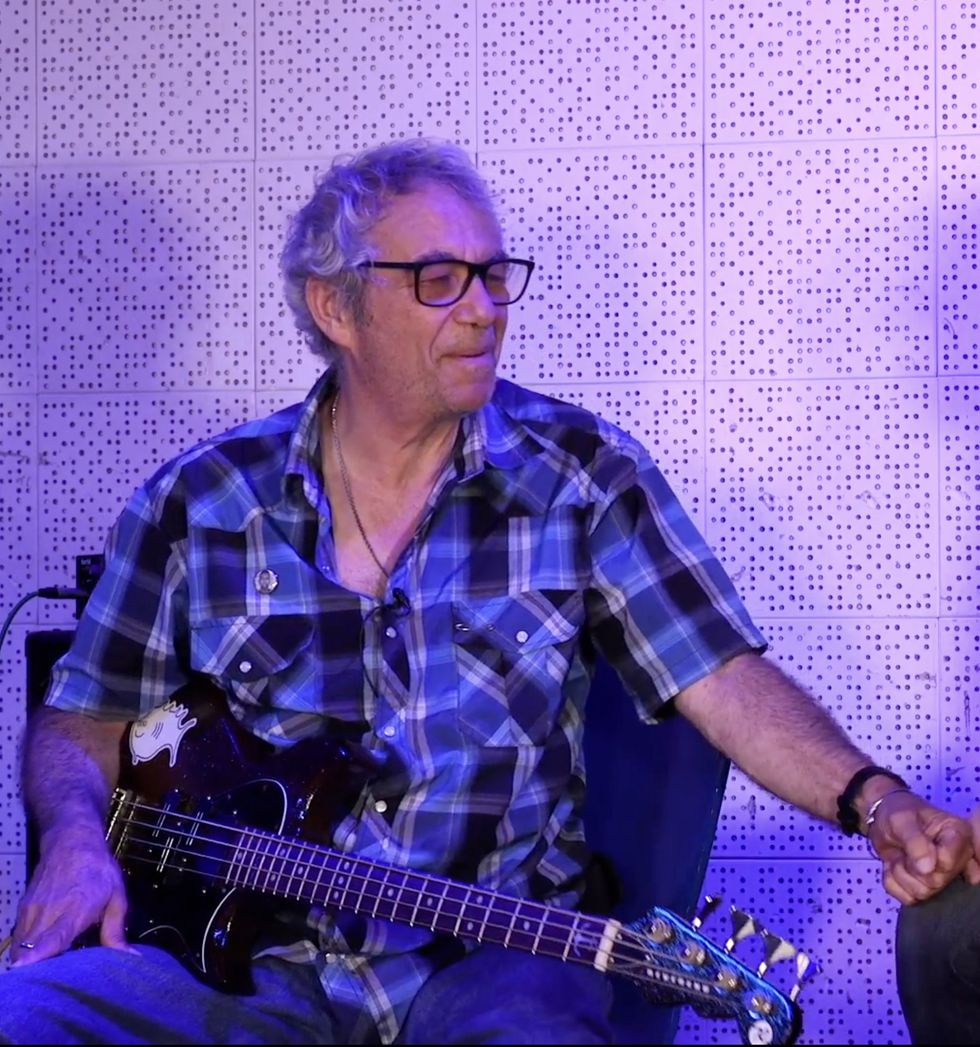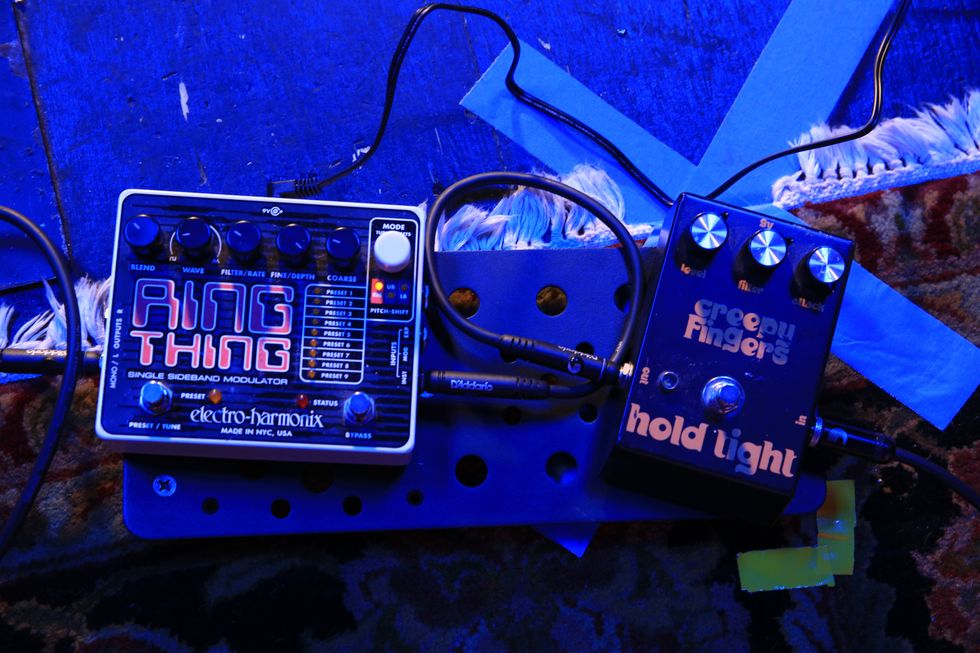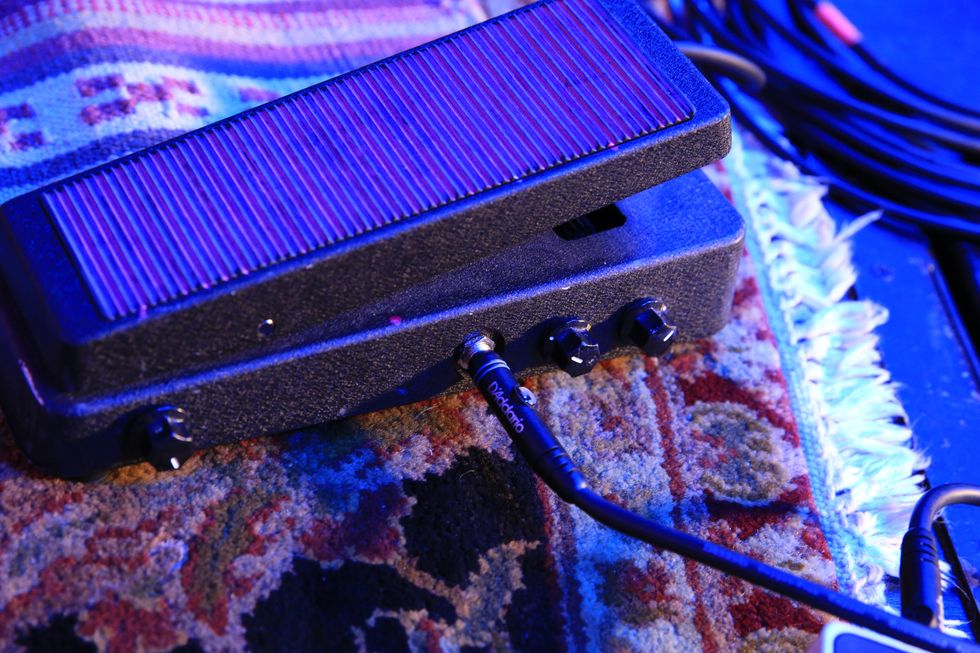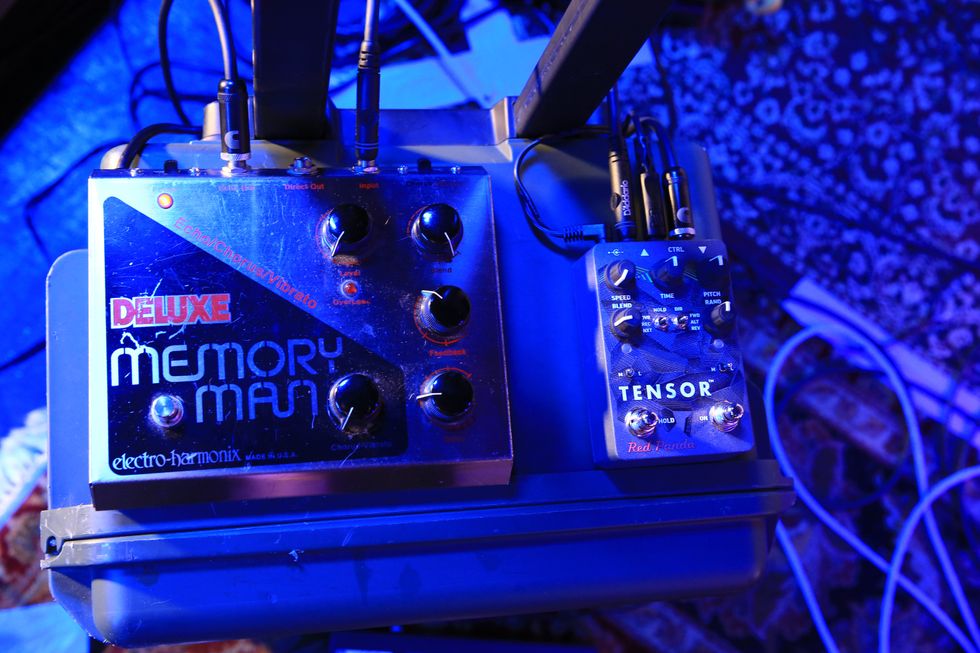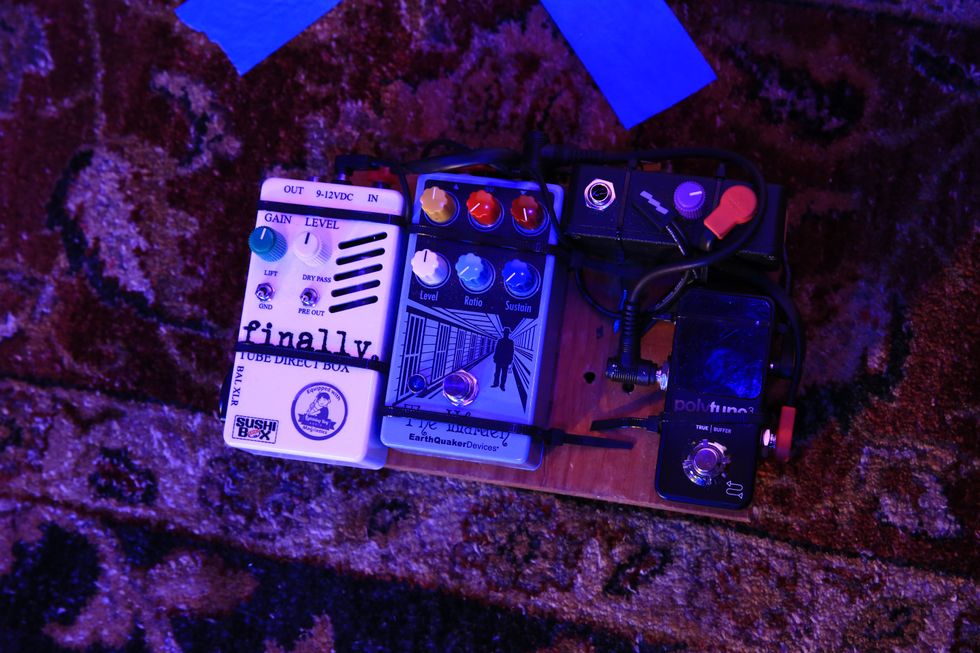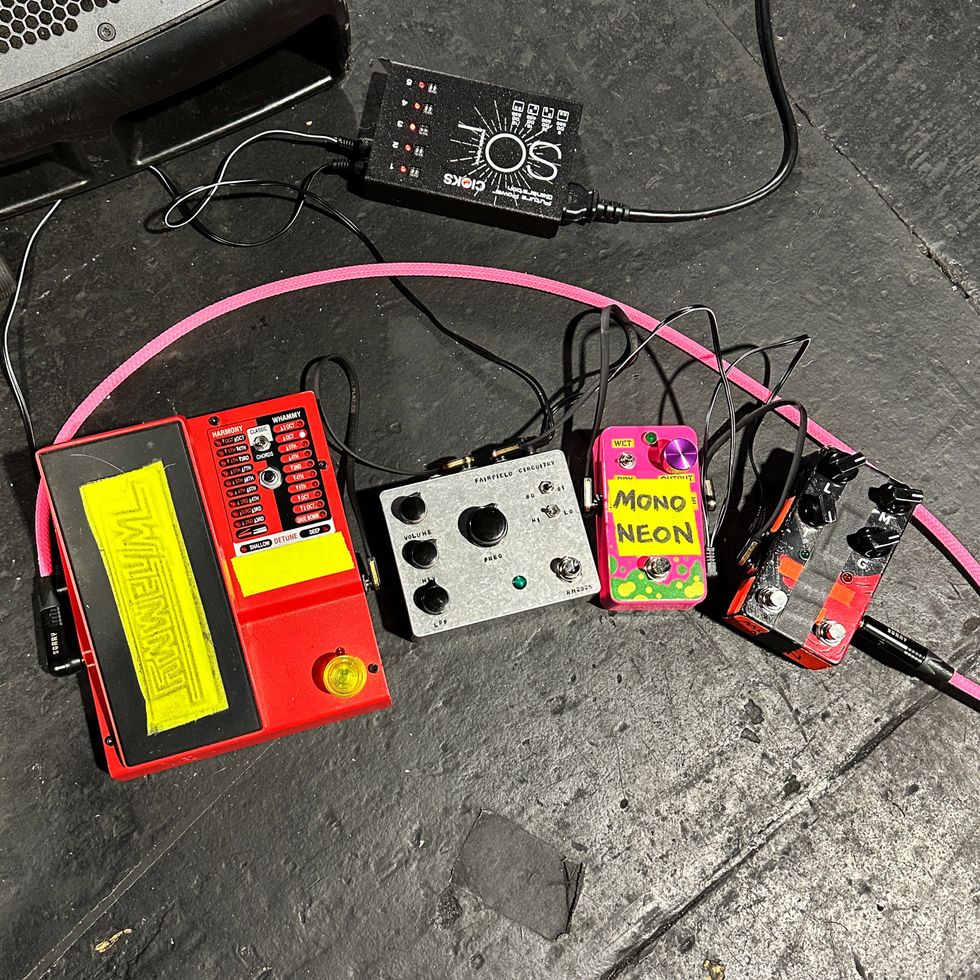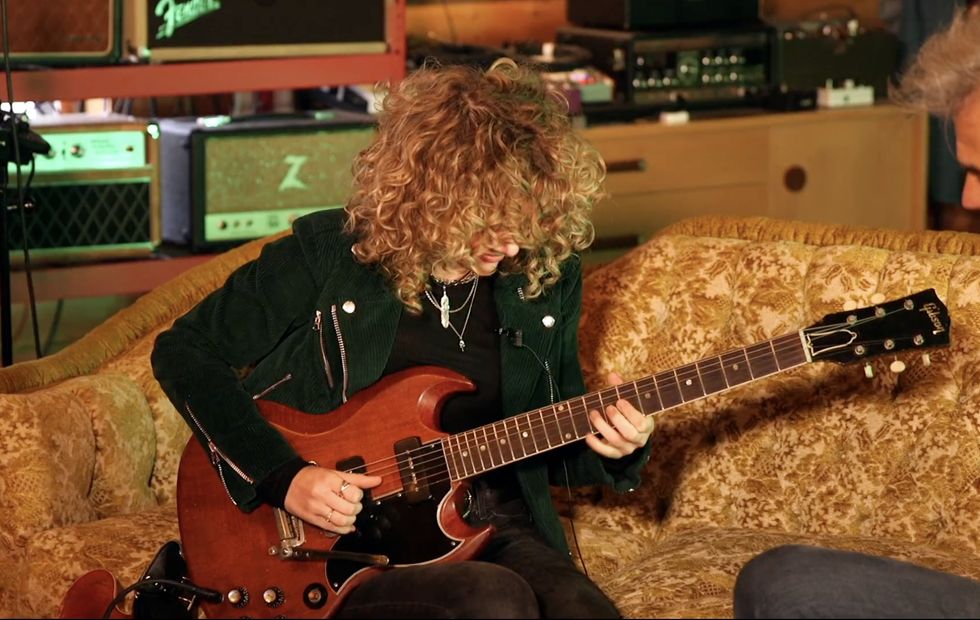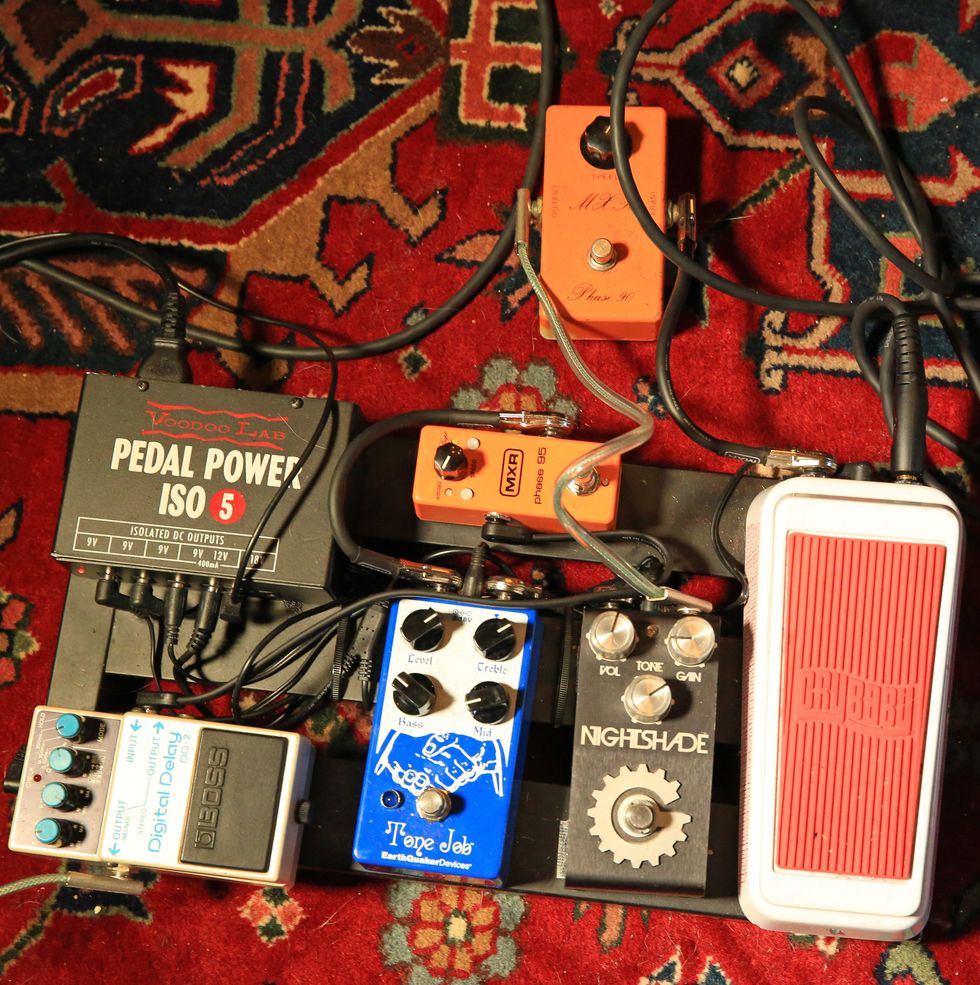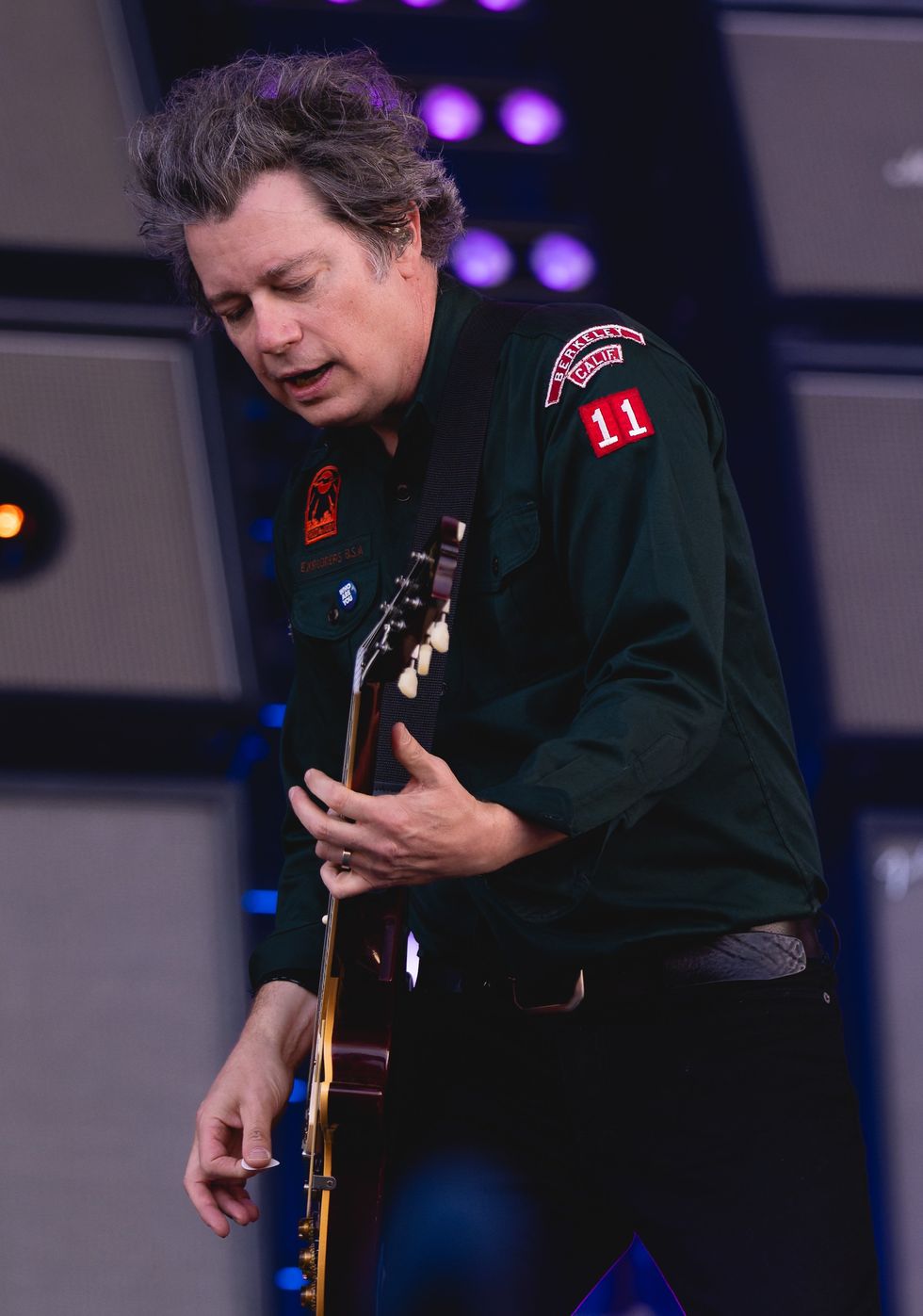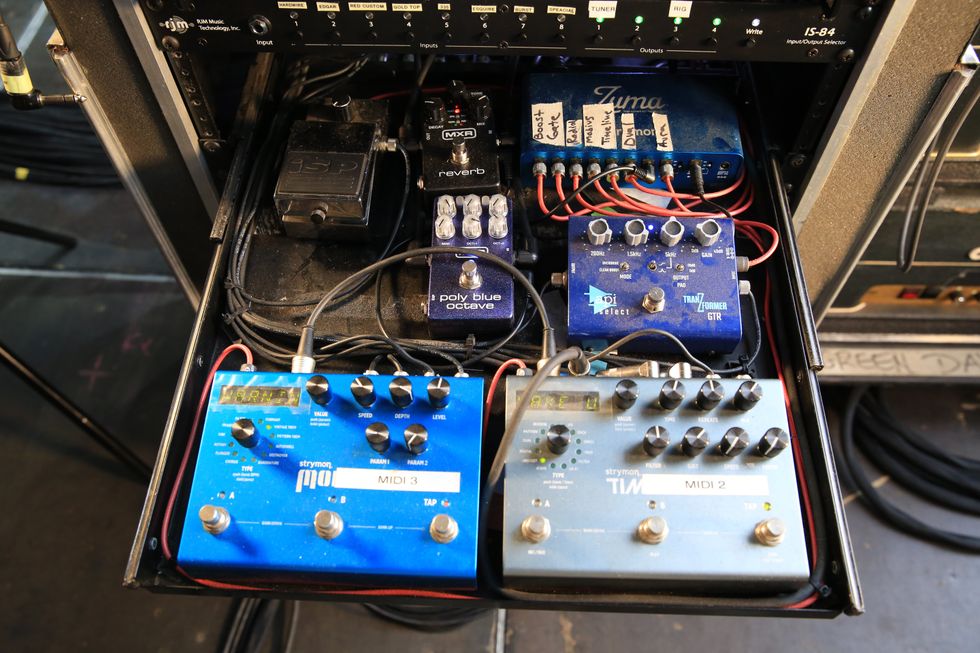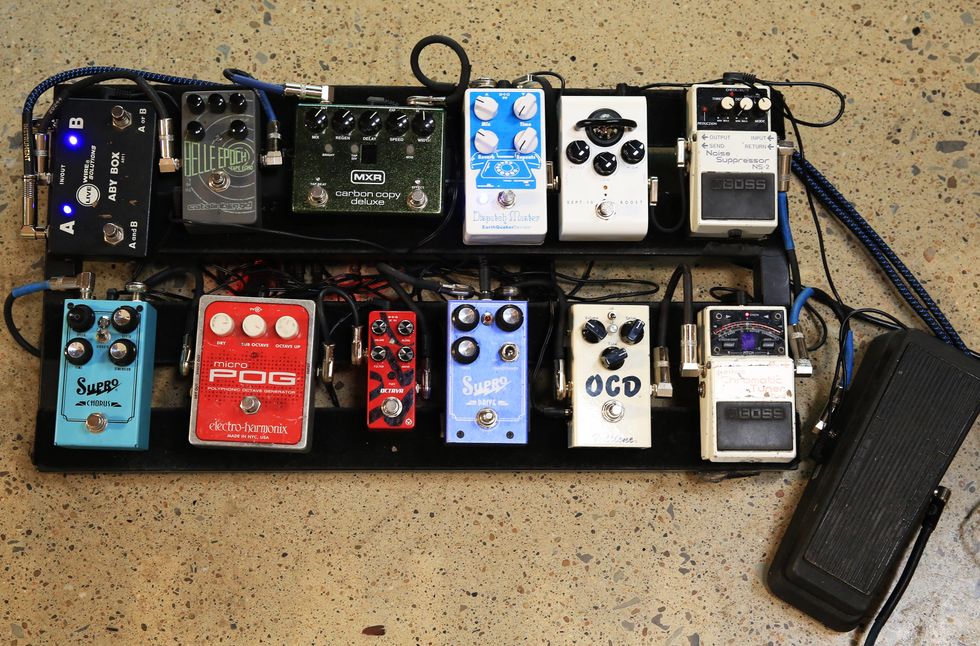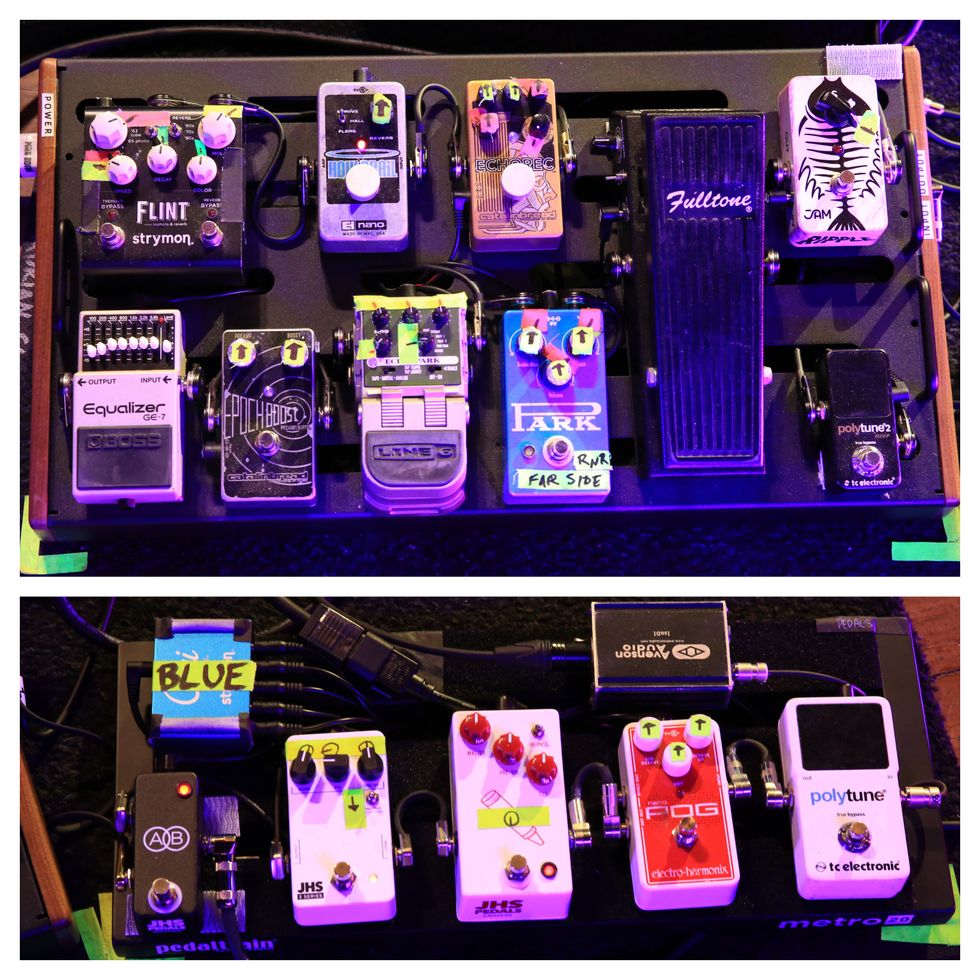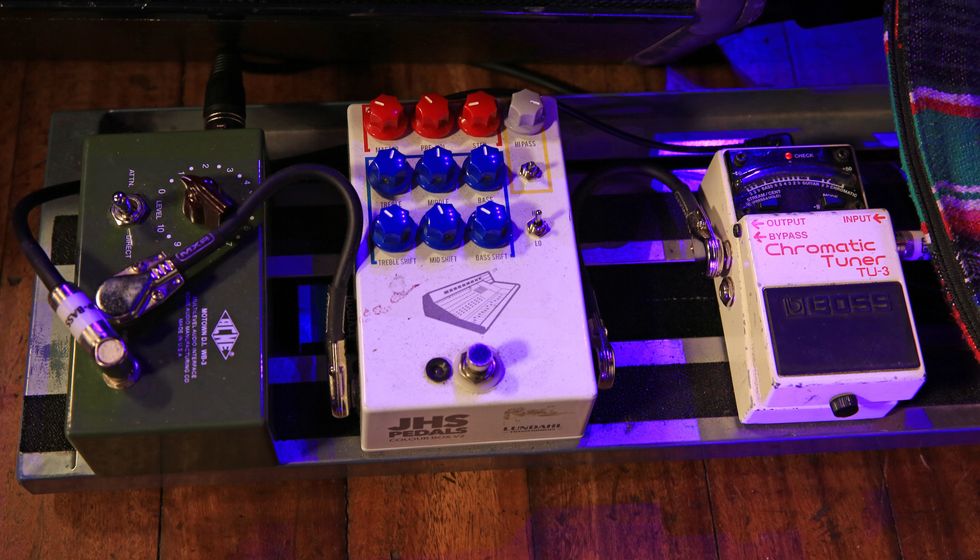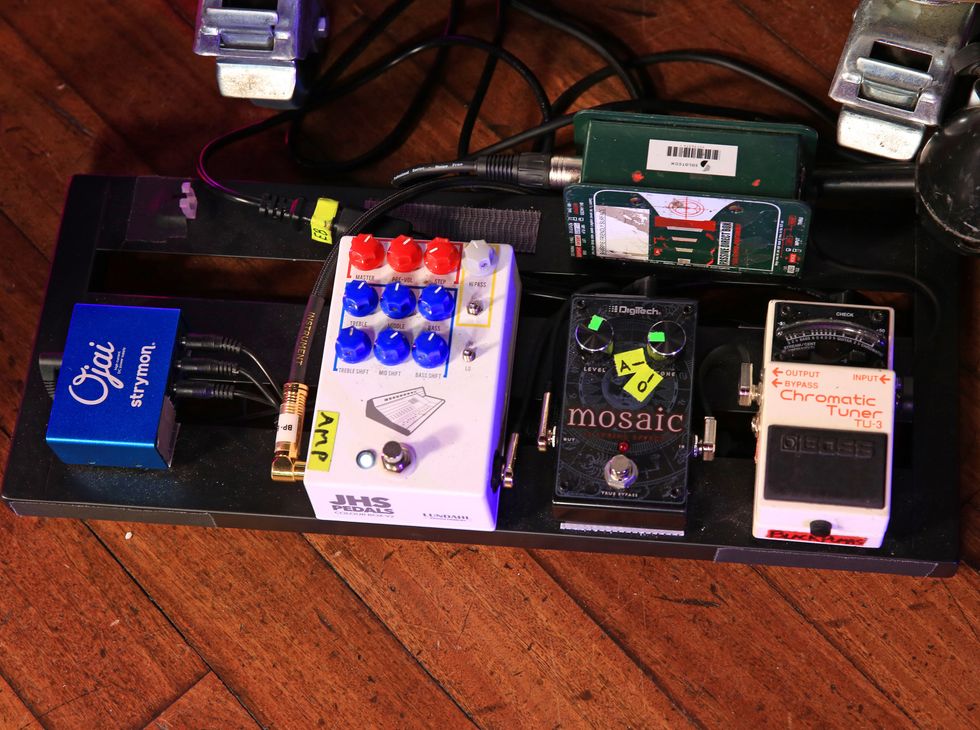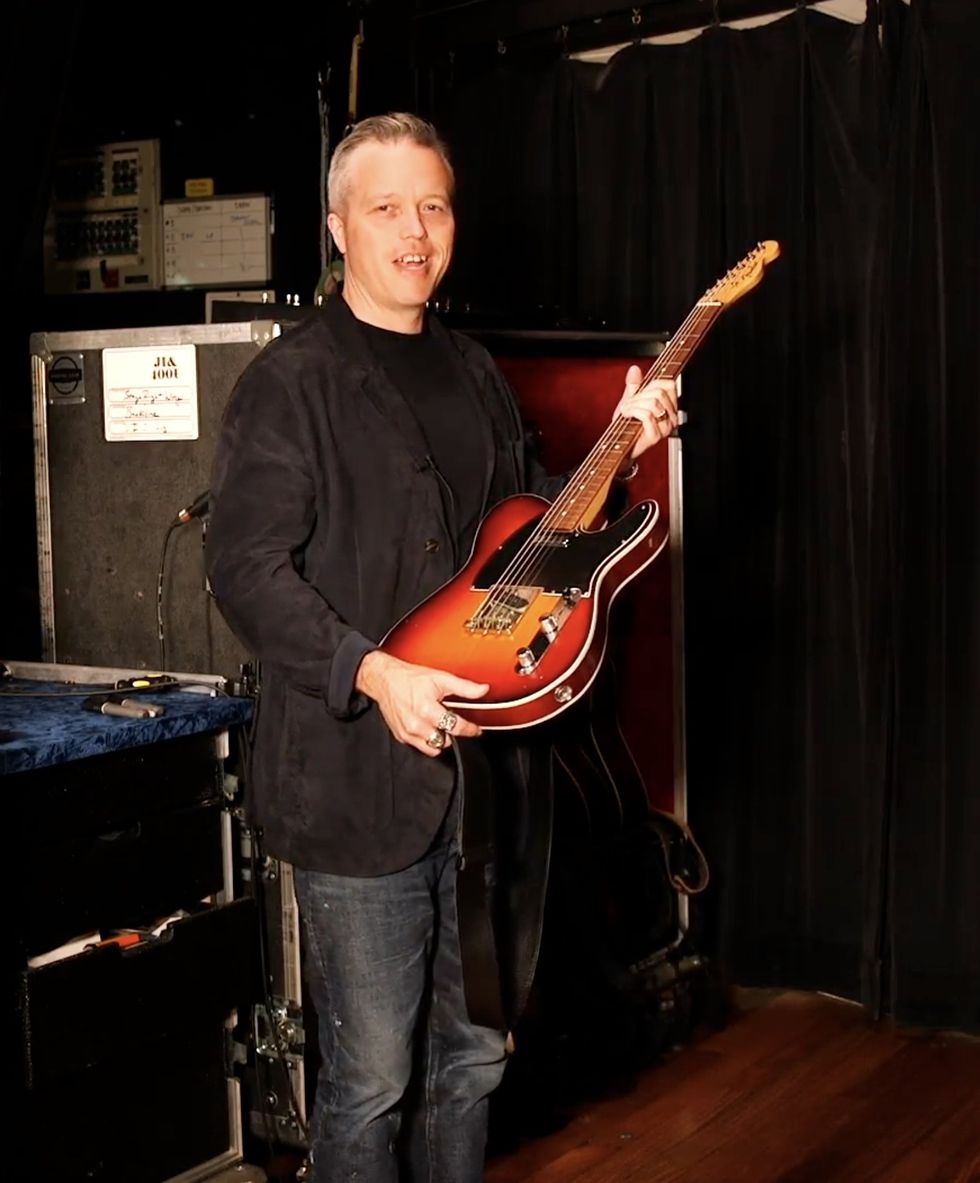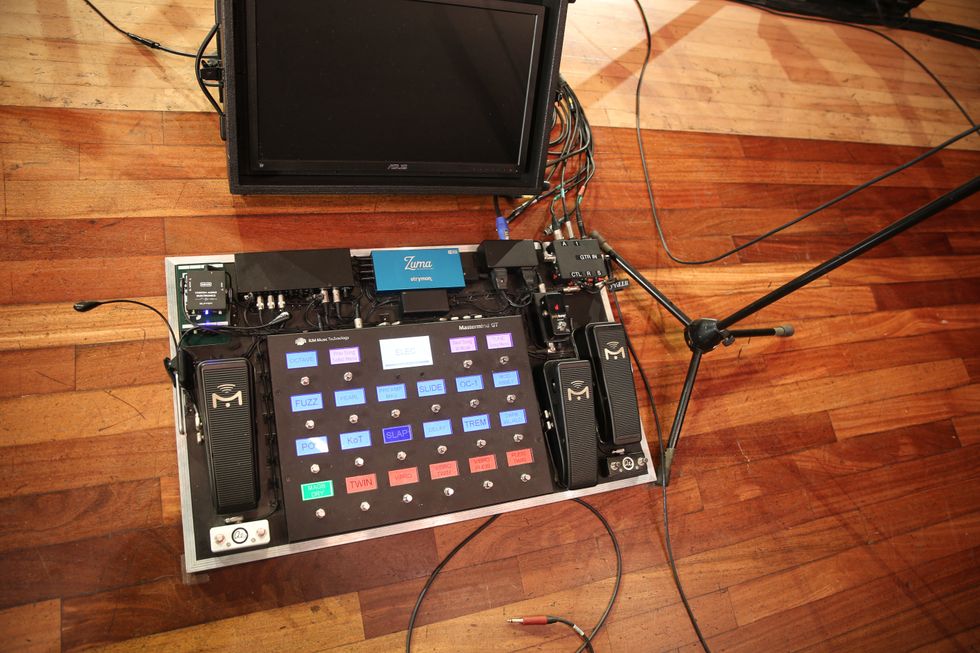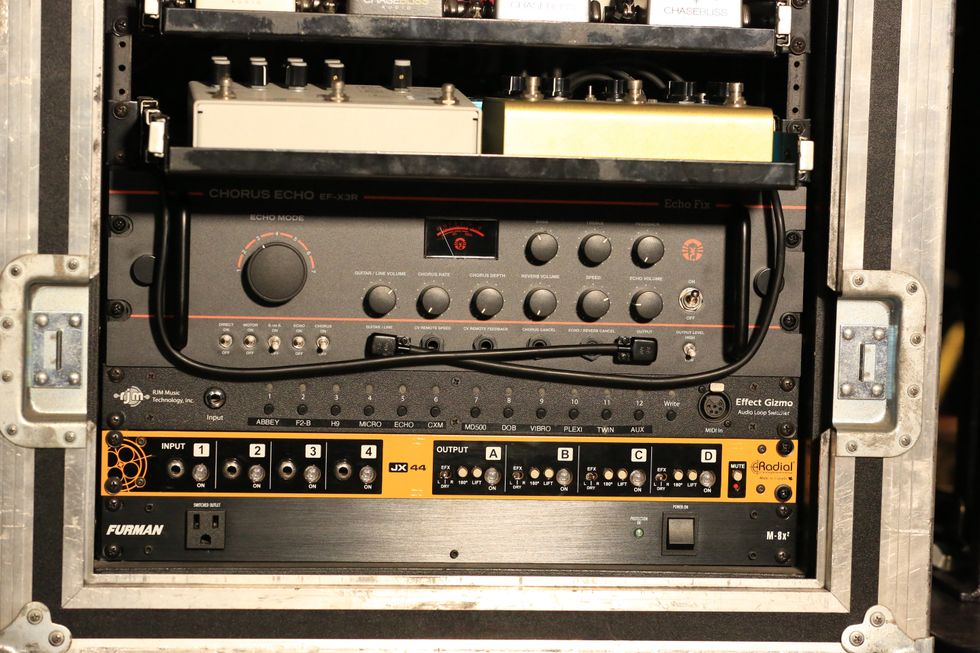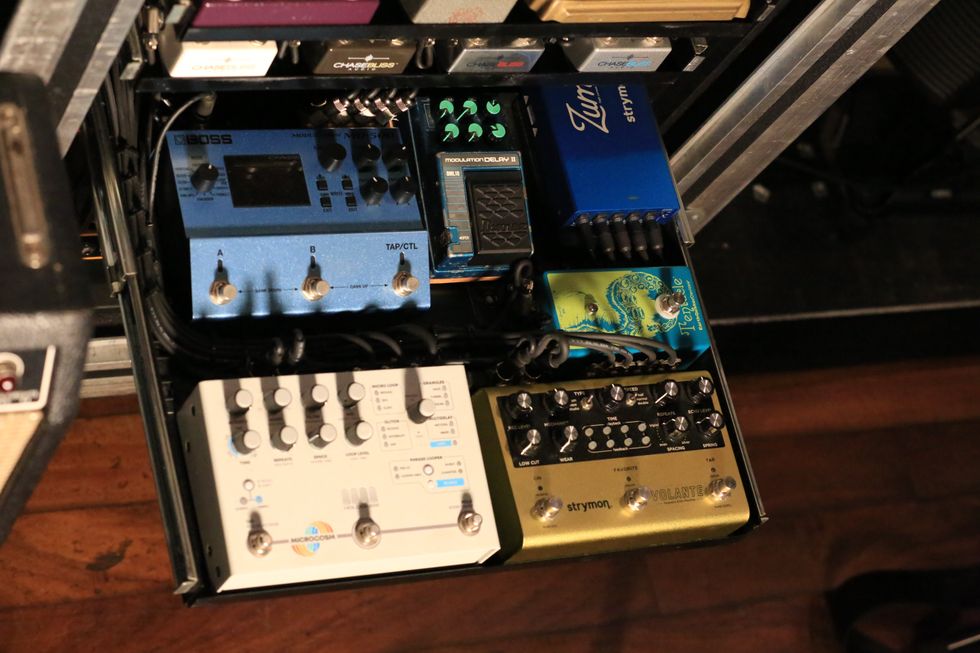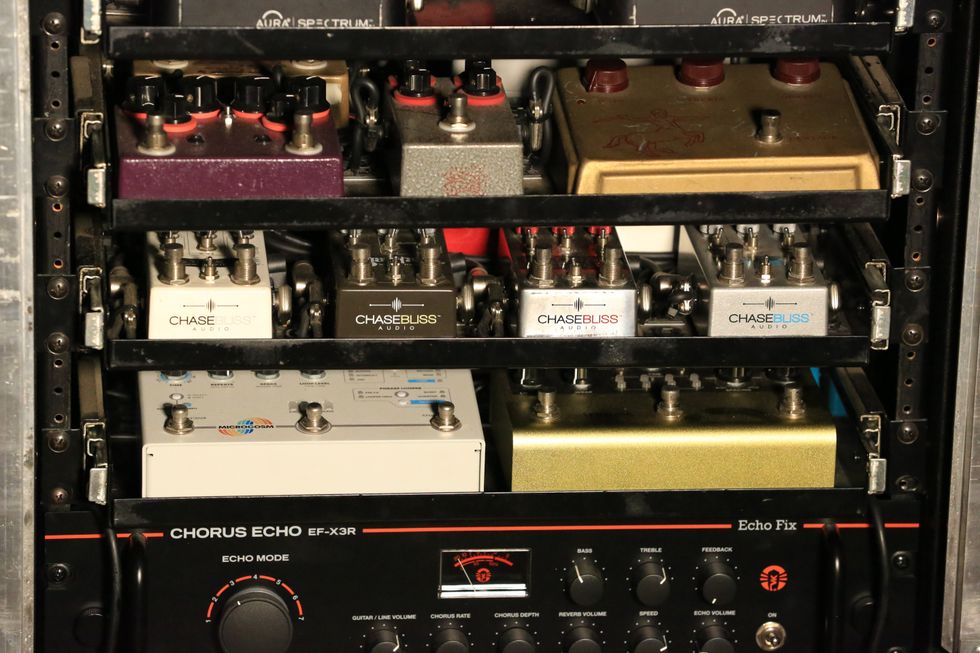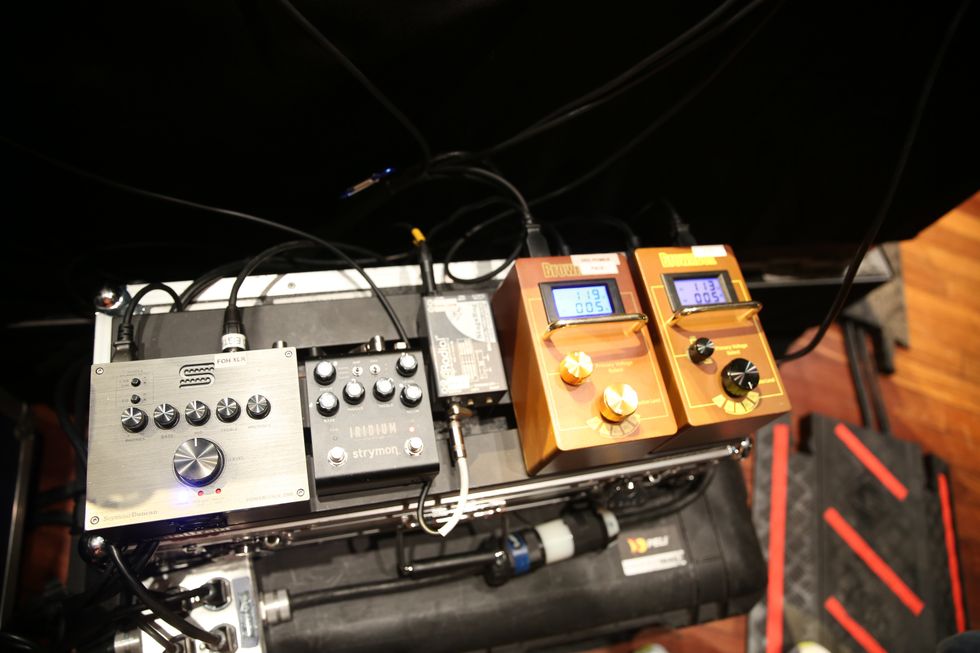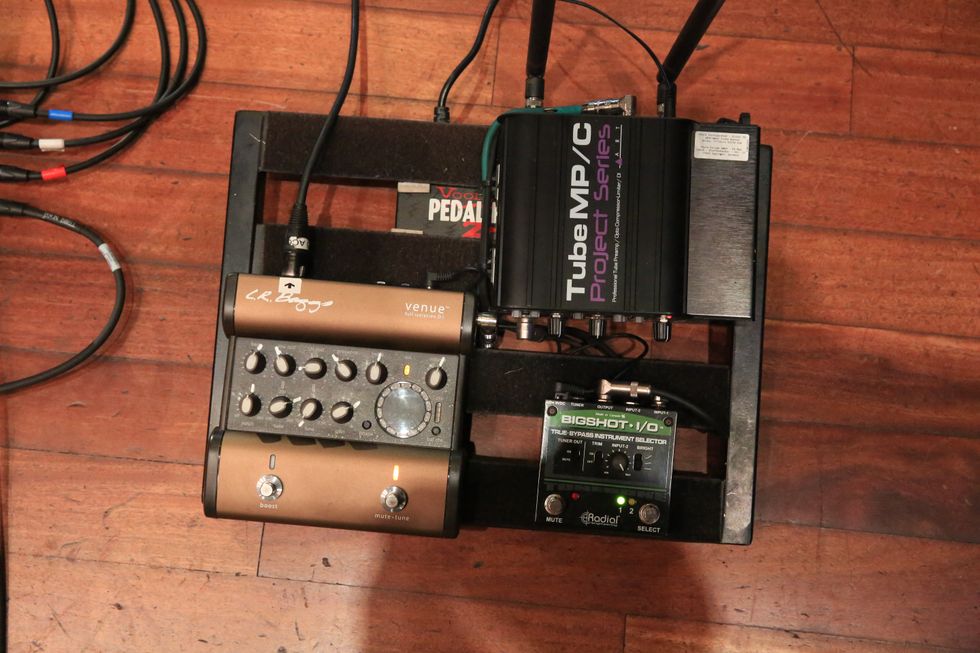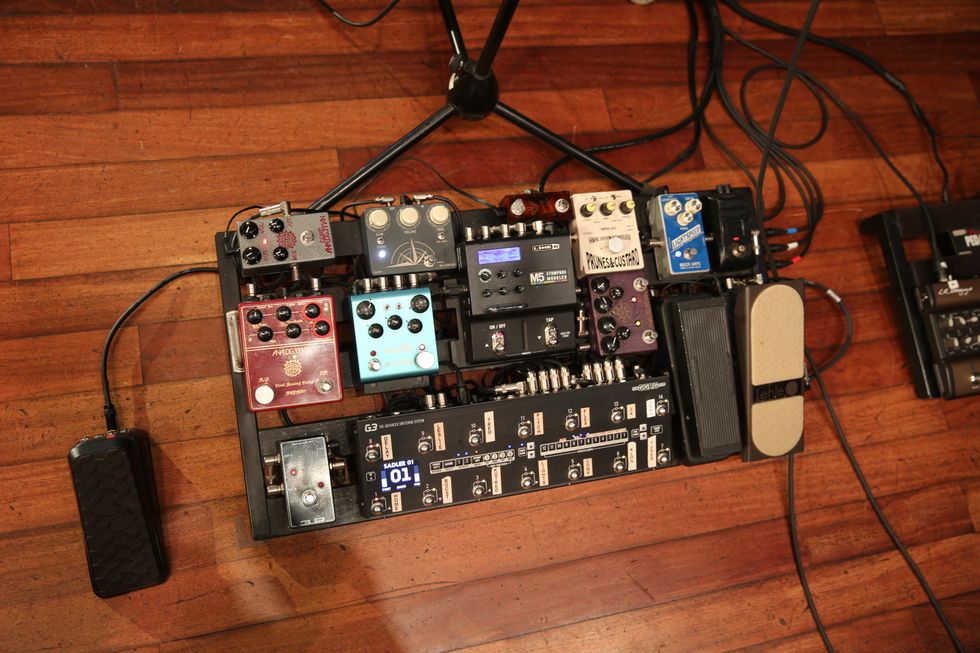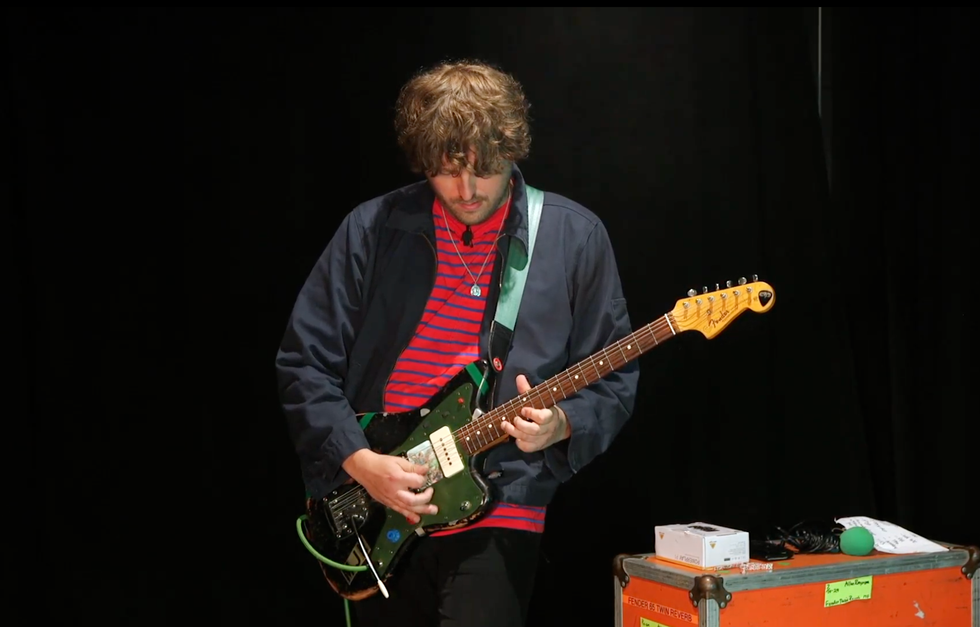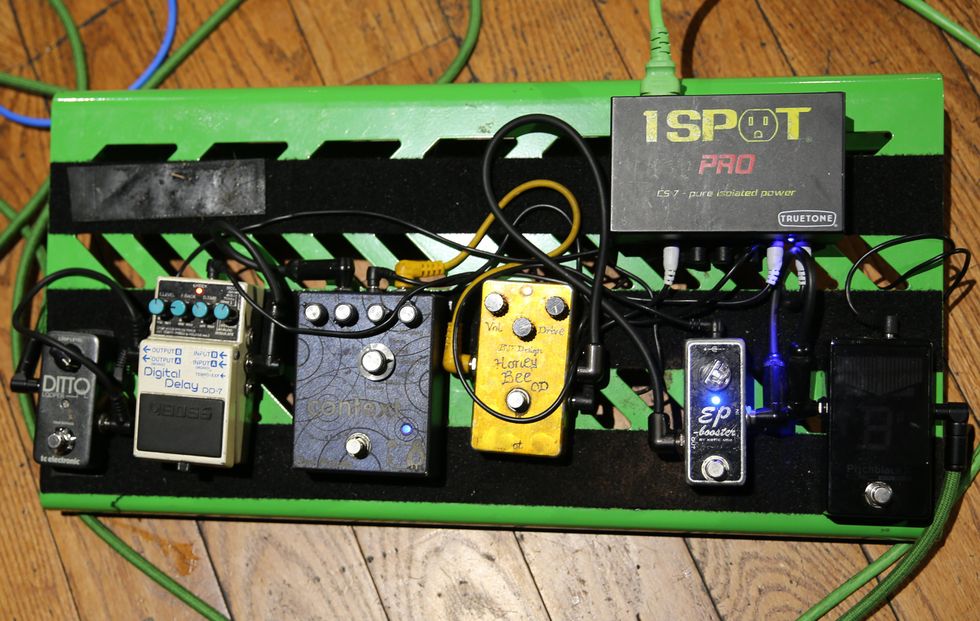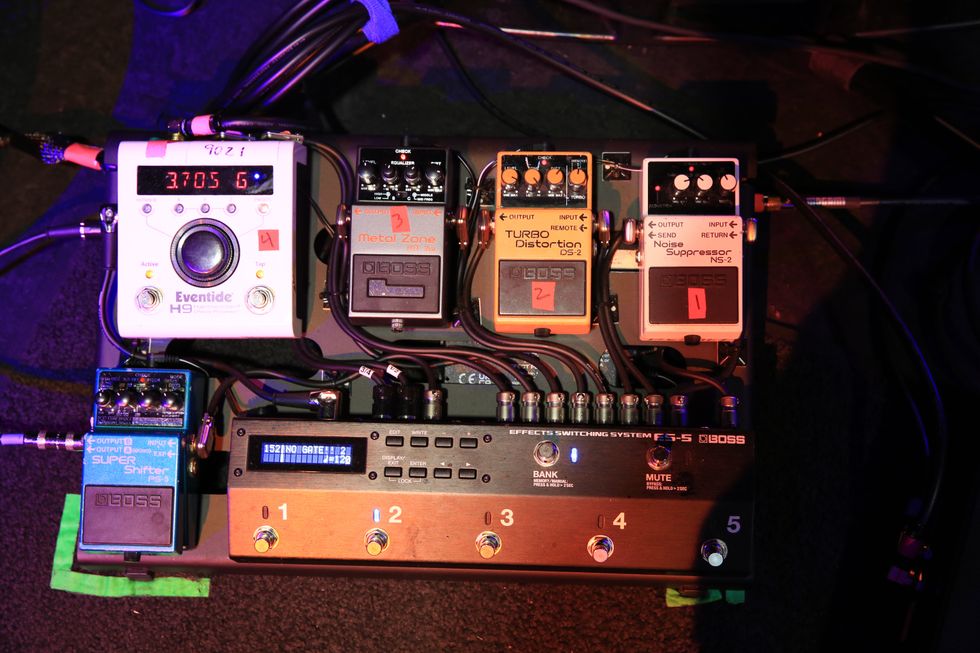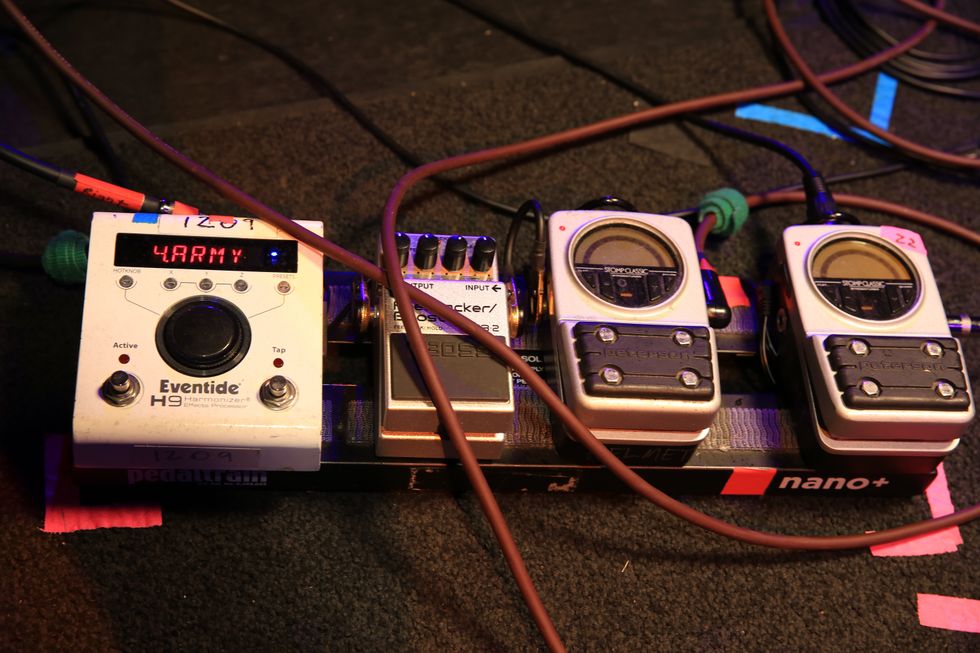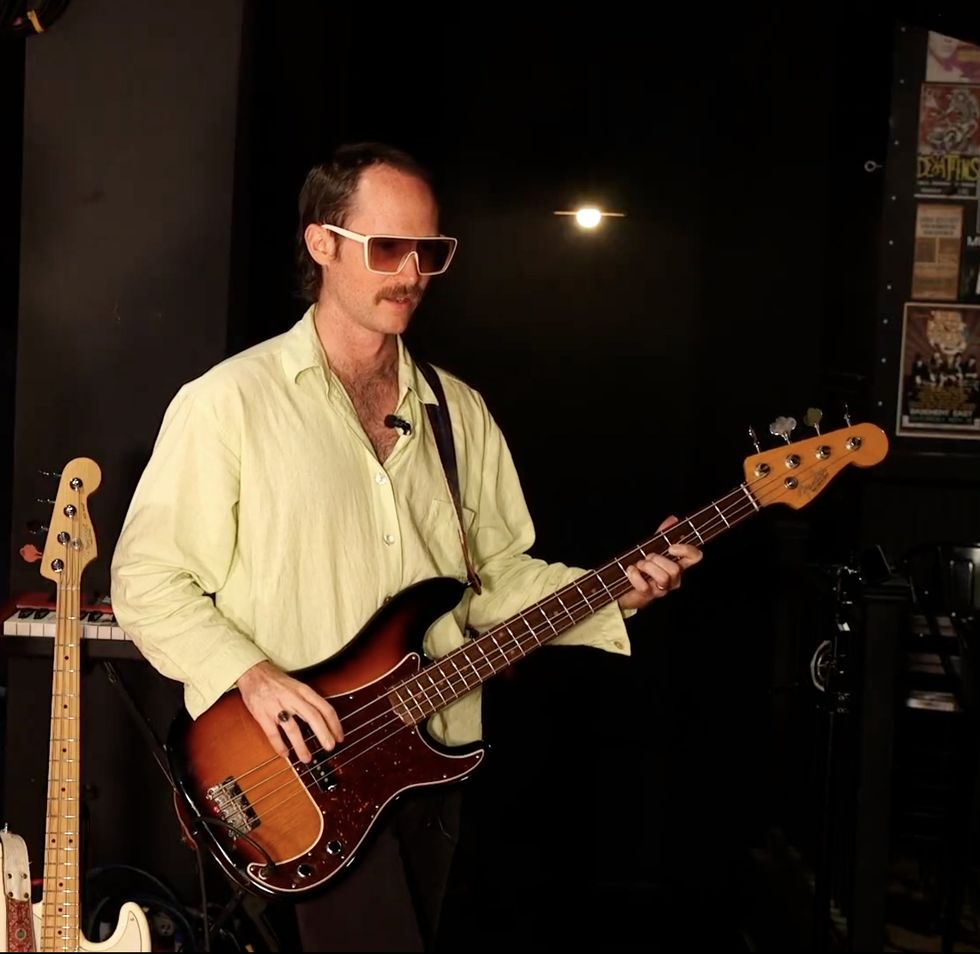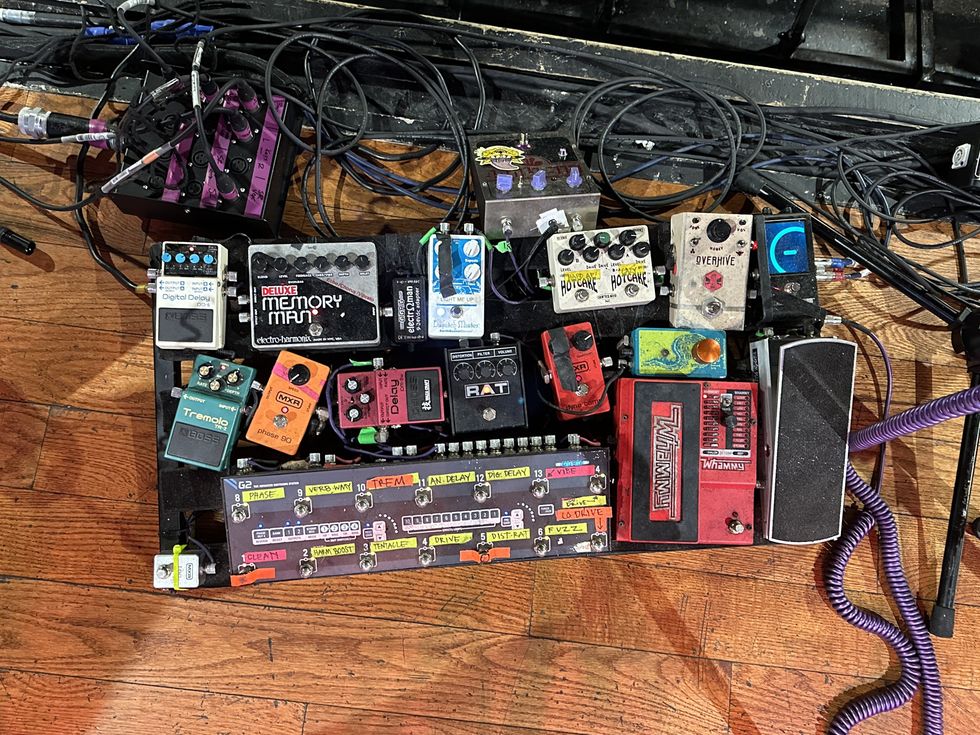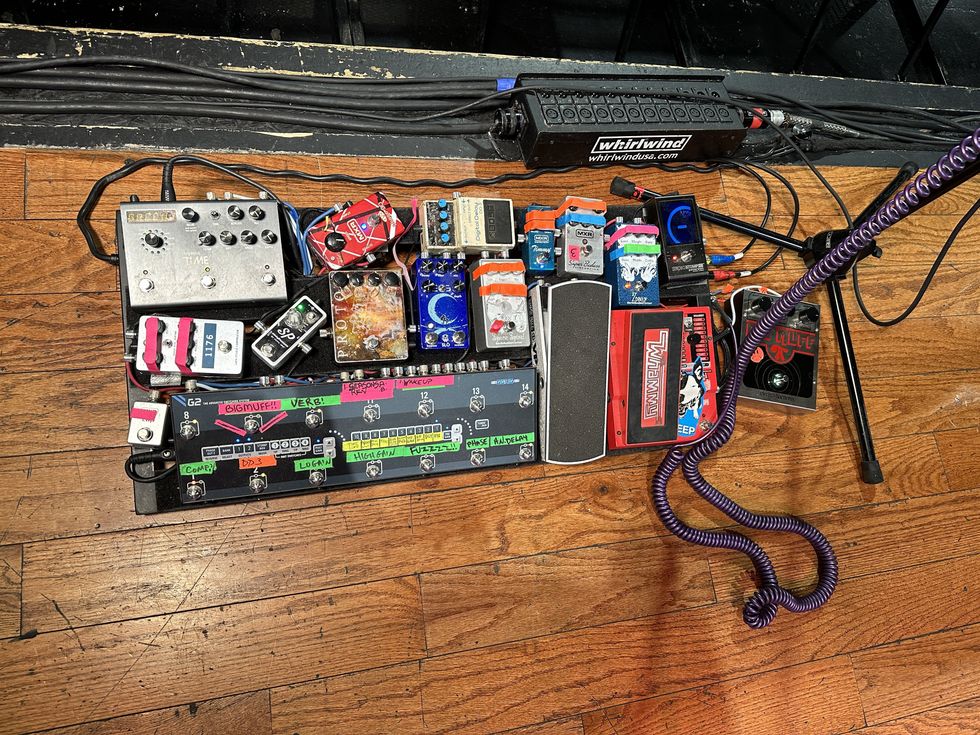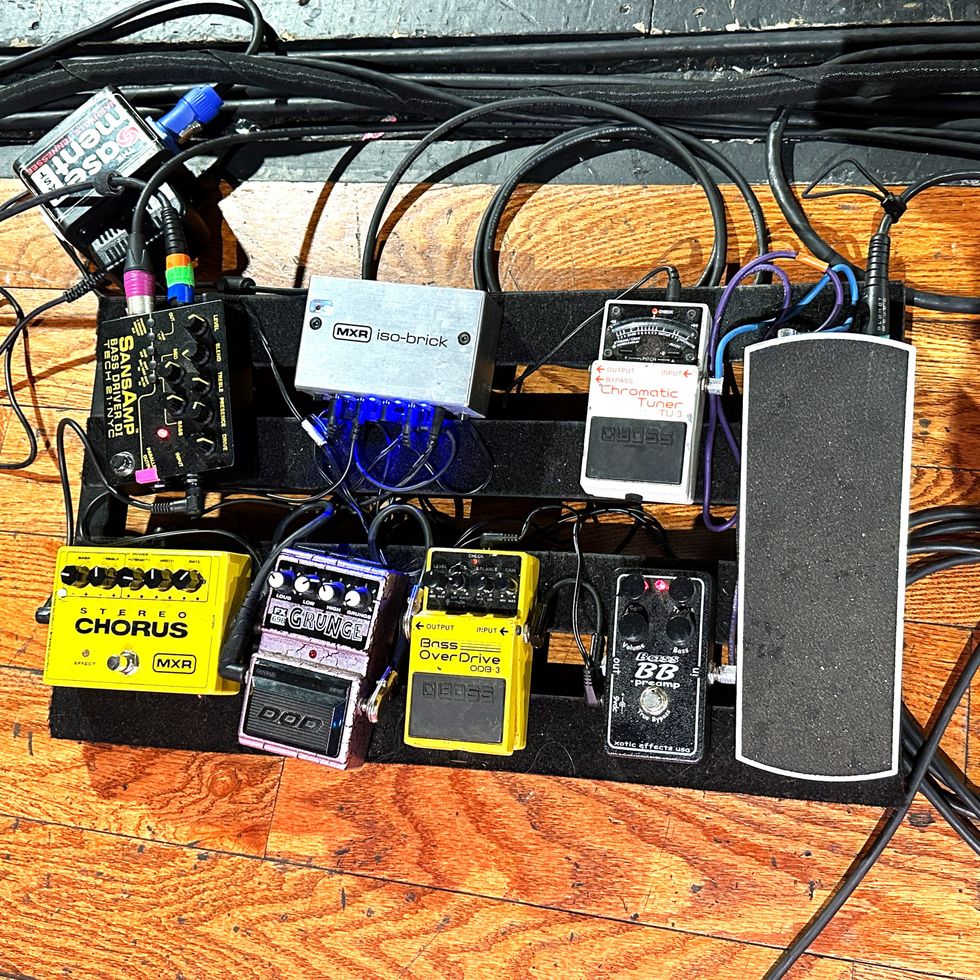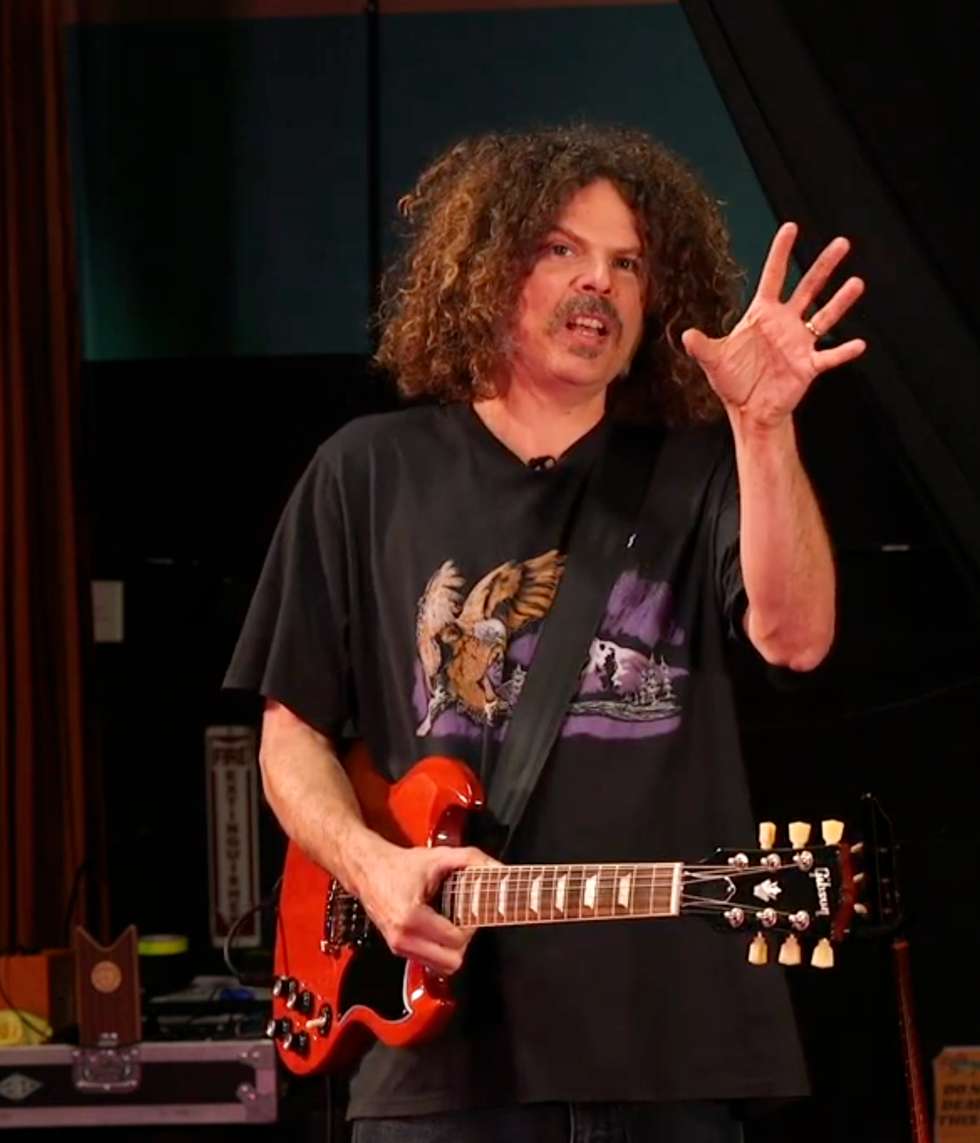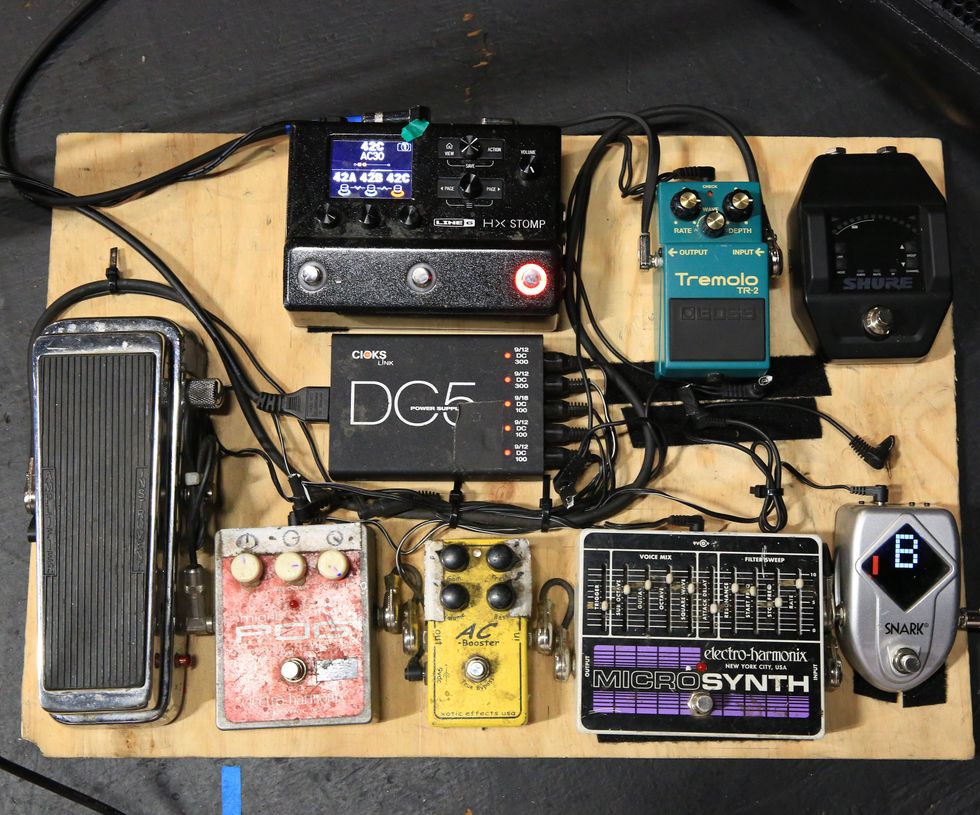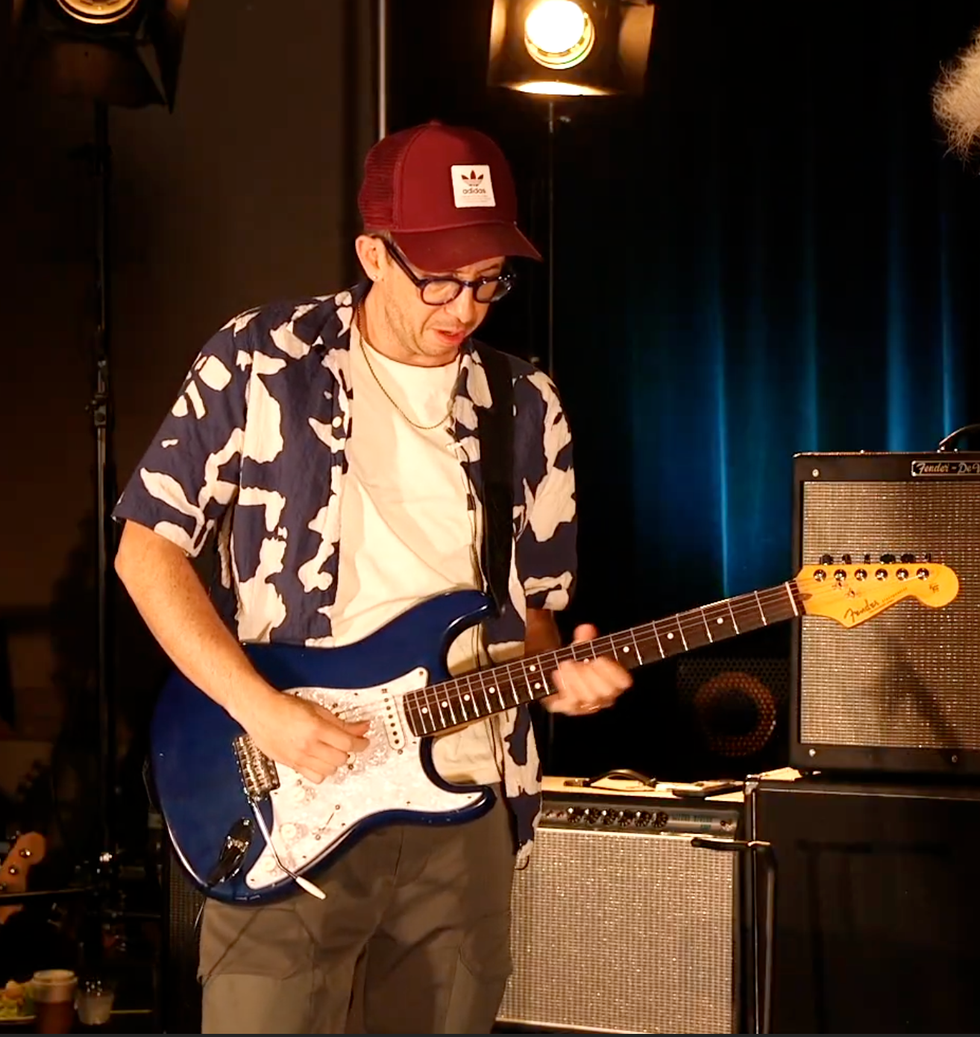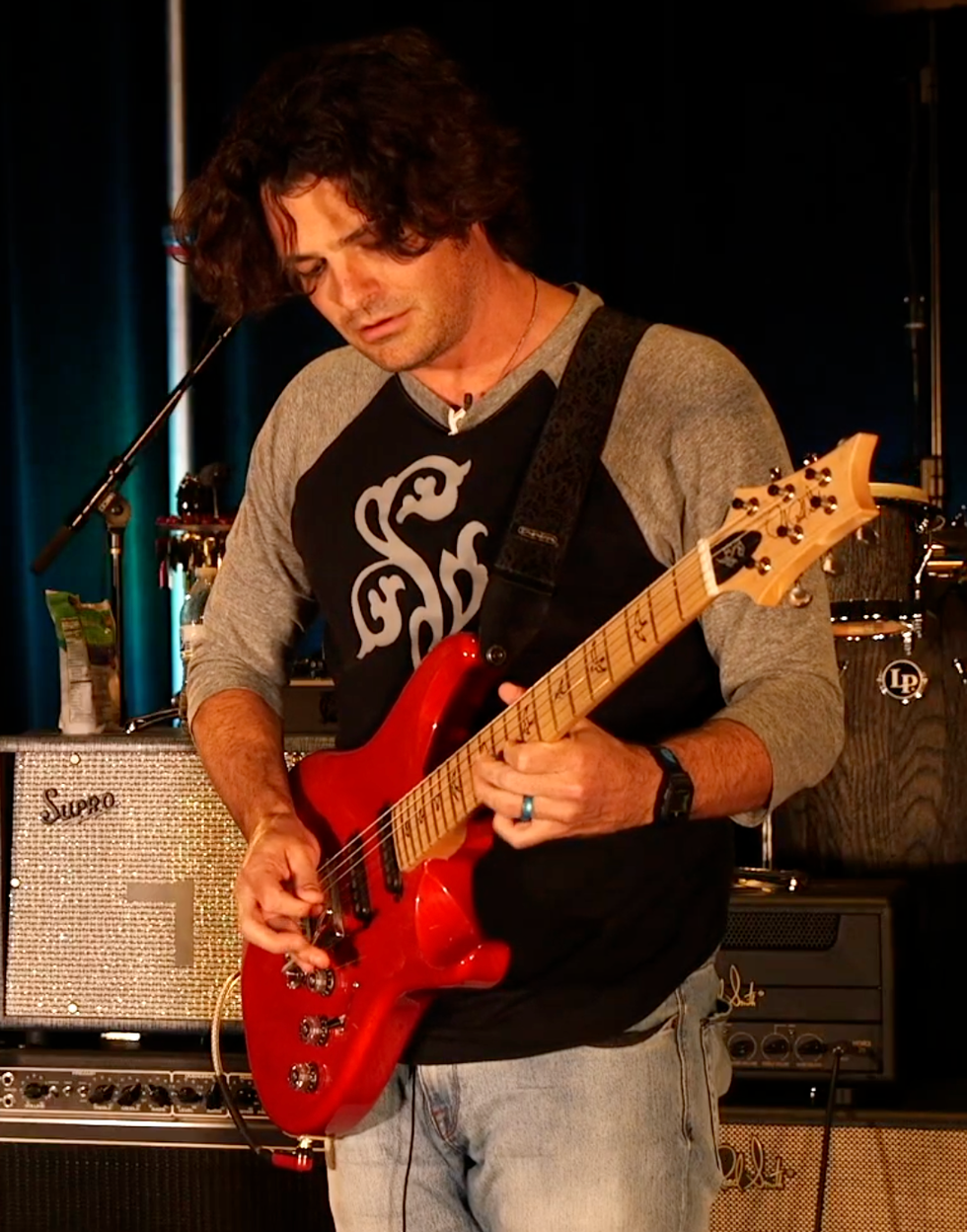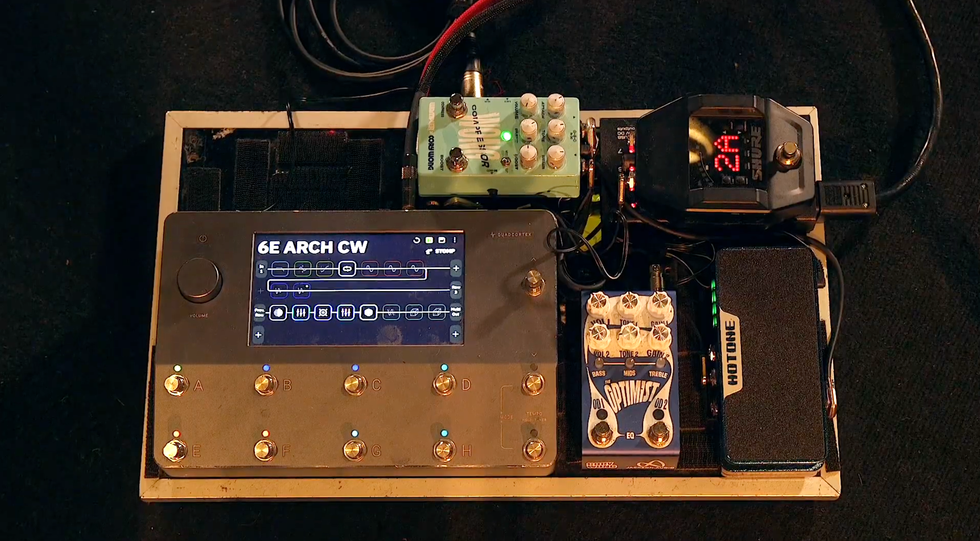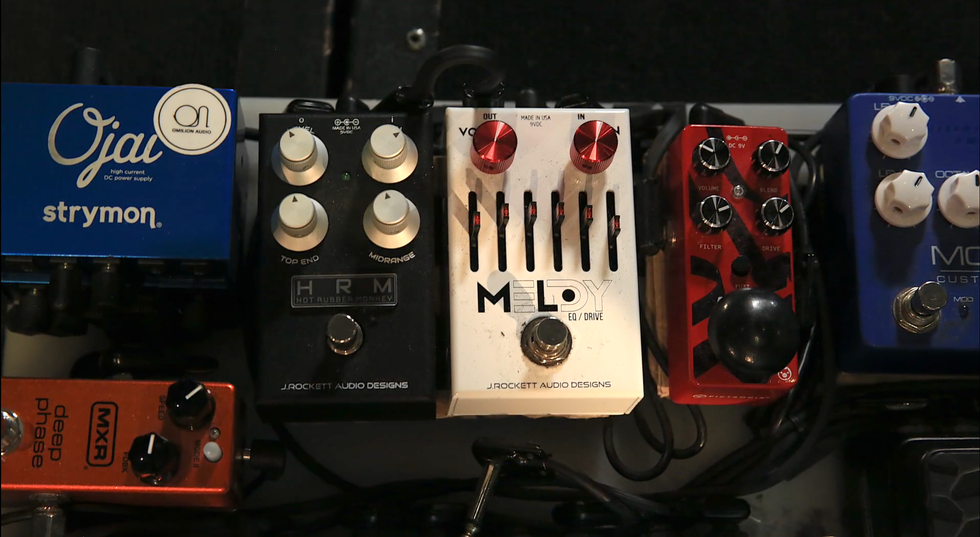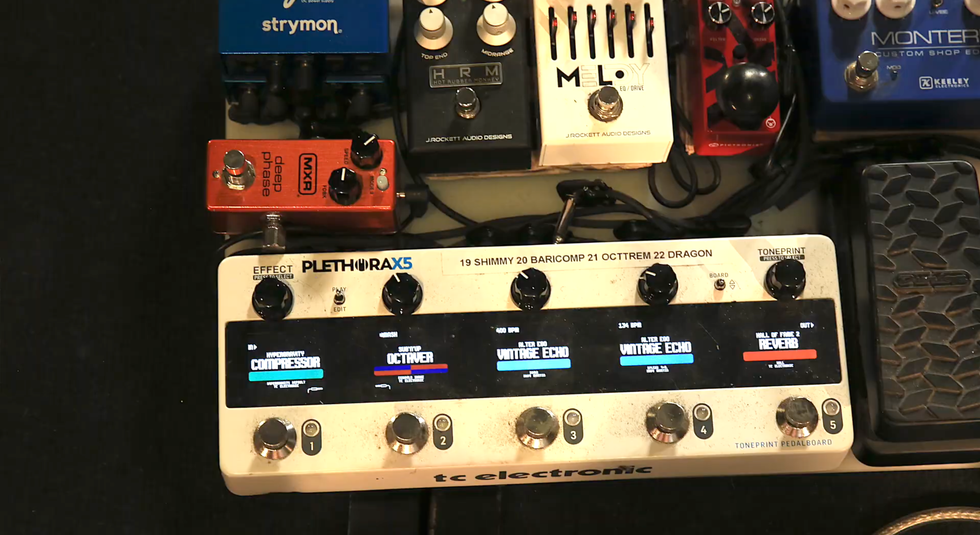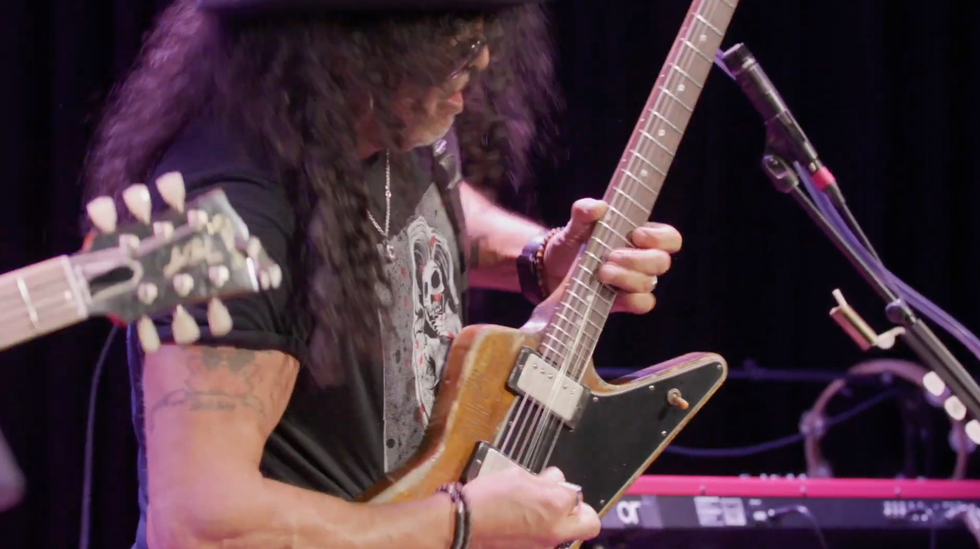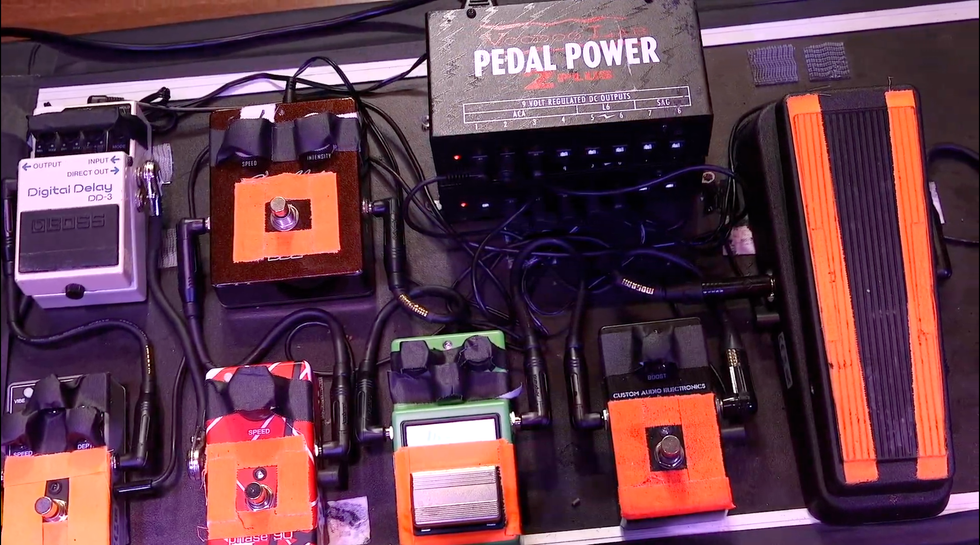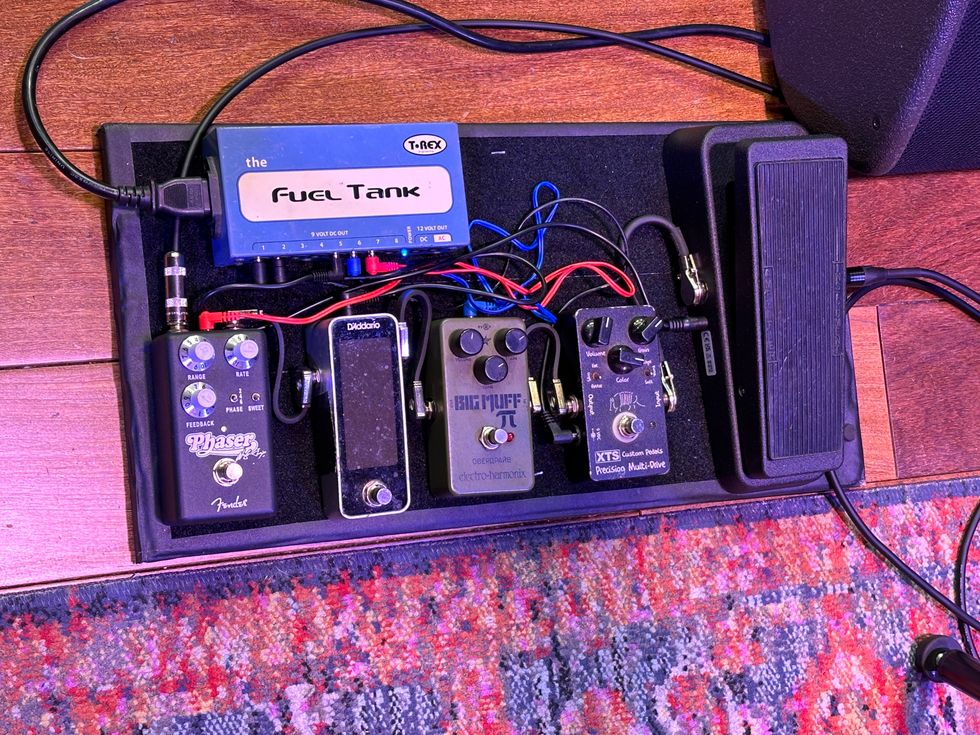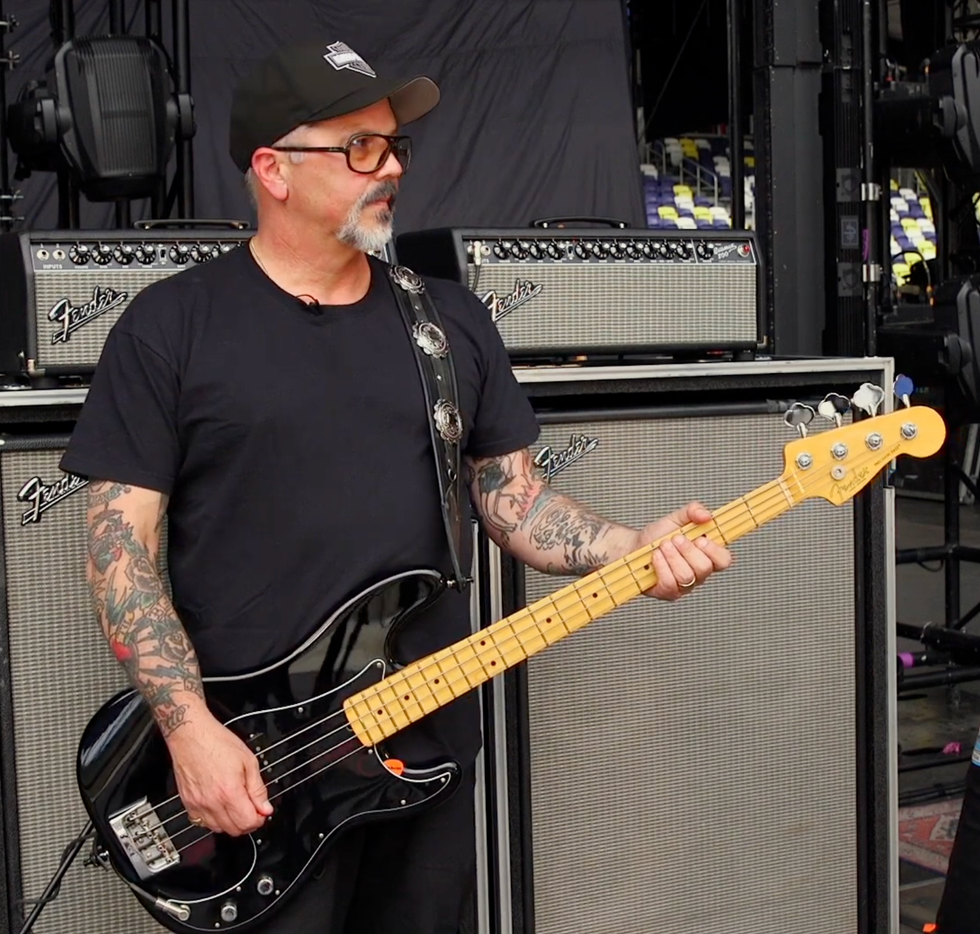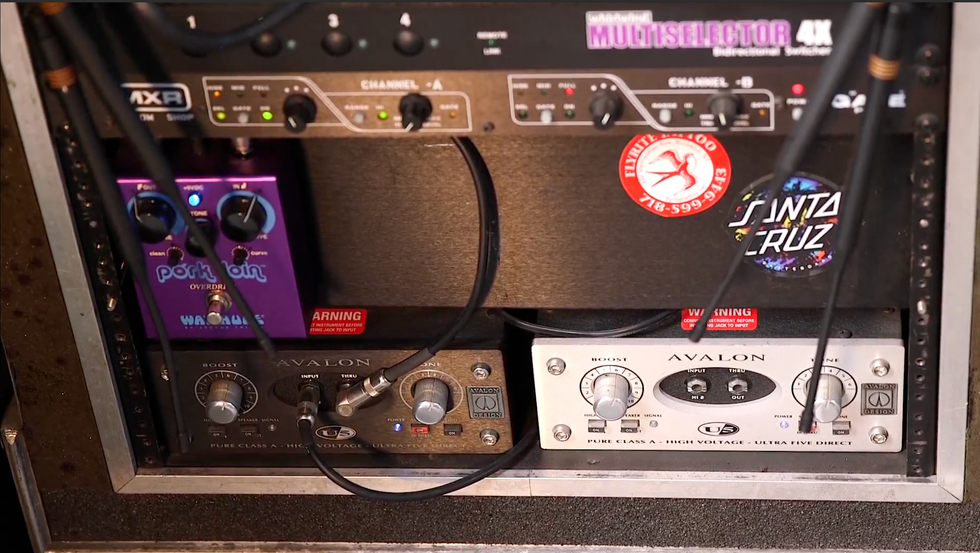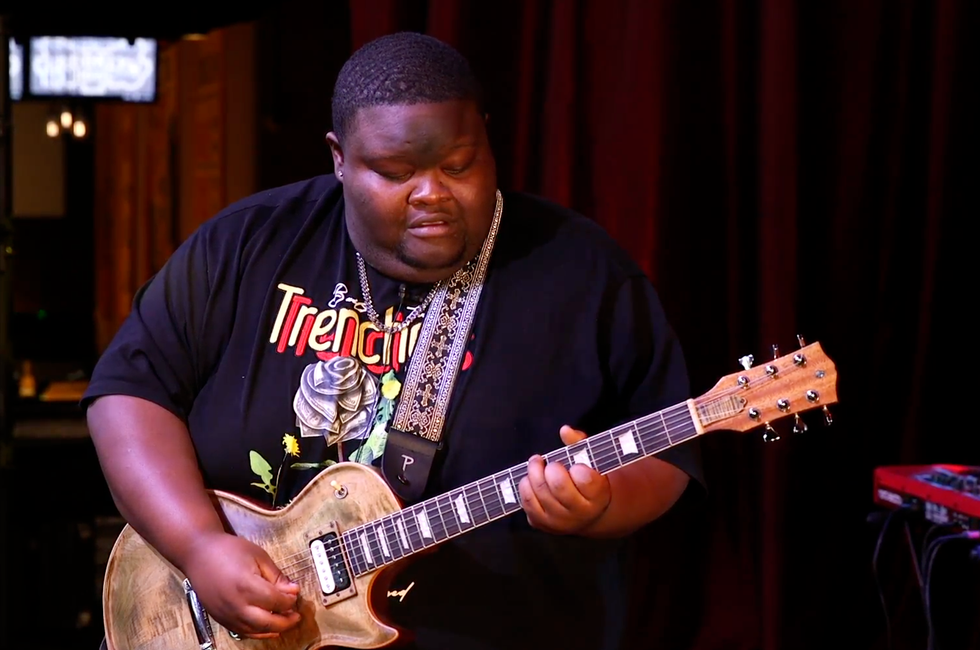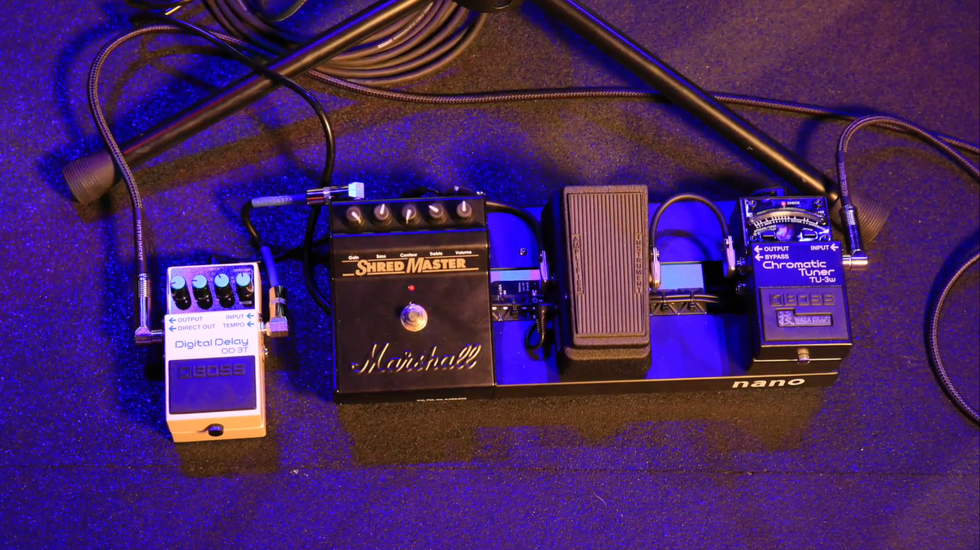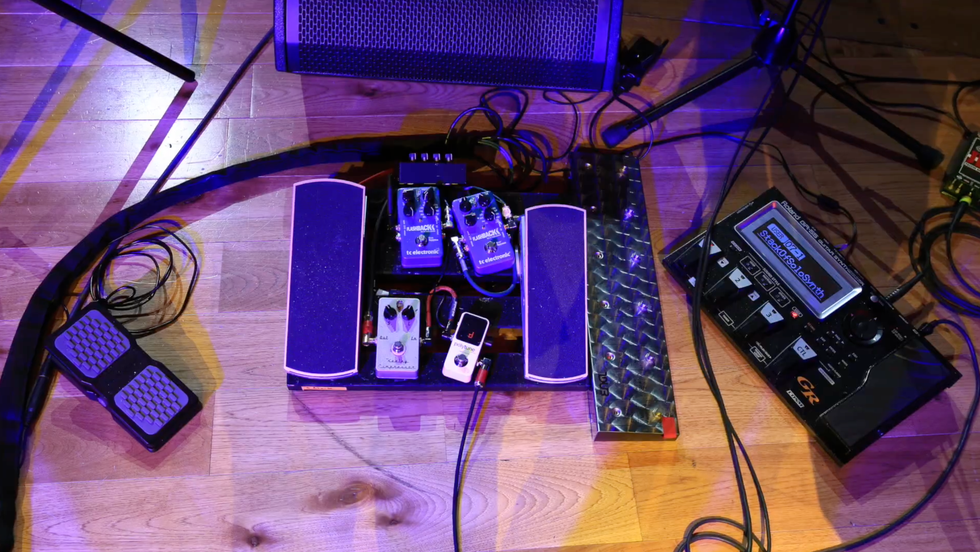Chops: Intermediate
Theory: Intermediate
Lesson Overview:
• Learn the difference between open and closed voicings.
• Create modal sounds using two pairs of triad arpeggios.
• Use string skipping to improve right-hand technique.
Click here to download a printable PDF of this lesson's notation.
Hello and welcome to The Thinking Shredder. Today’s special on the menu: open-voiced arpeggios! There are many different ways to play arpeggios across the guitar and in this column I will introduce you to ideas that will give your arpeggios a more angular sound. We want to escape the dense sound of playing arpeggios with a series of stacked thirds.
Theory: Intermediate
Lesson Overview:
• Learn the difference between open and closed voicings.
• Create modal sounds using two pairs of triad arpeggios.
• Use string skipping to improve right-hand technique.
Click here to download a printable PDF of this lesson's notation.
A few ideas include skipping ever other chord tone and “dropping” chord tones by an octave. The resulting interval gaps allow for more sonic space and will make the sound appear less dark and dull.
In Fig. 1 you can see two voicings for an A major chord. The first is known as a “closed” voicing meaning all of the notes are within an octave. We spread things out a bit in the second voicing and create a more “open” sound since the range of notes extends more than an octave. By skipping or displacing a note within the voicing of the arpeggio or chord, it increases the intervallic range.
or download example audio
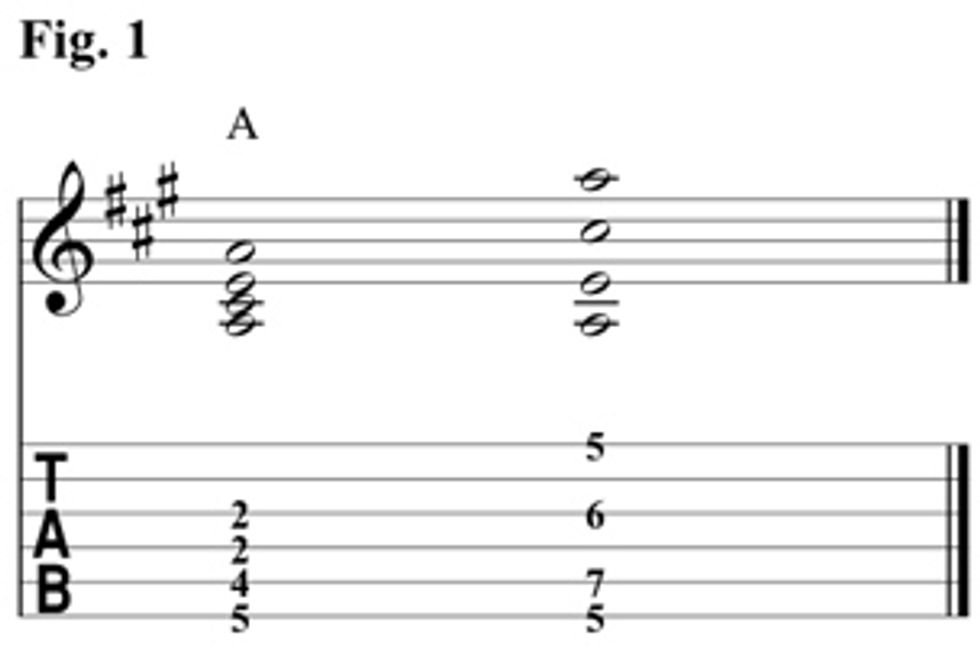
Once we understand how to create an open-voiced chord, we can then turn them into arpeggios pretty easily. In Fig. 2 you can see the three inversions of both A major and A minor arpeggios, in addition to a fingering for A diminished and A augmented. These arpeggios require some stretching so practice each form slowly and cleanly before attempting to put all the inversions together to a longer sequence.
or download example audio
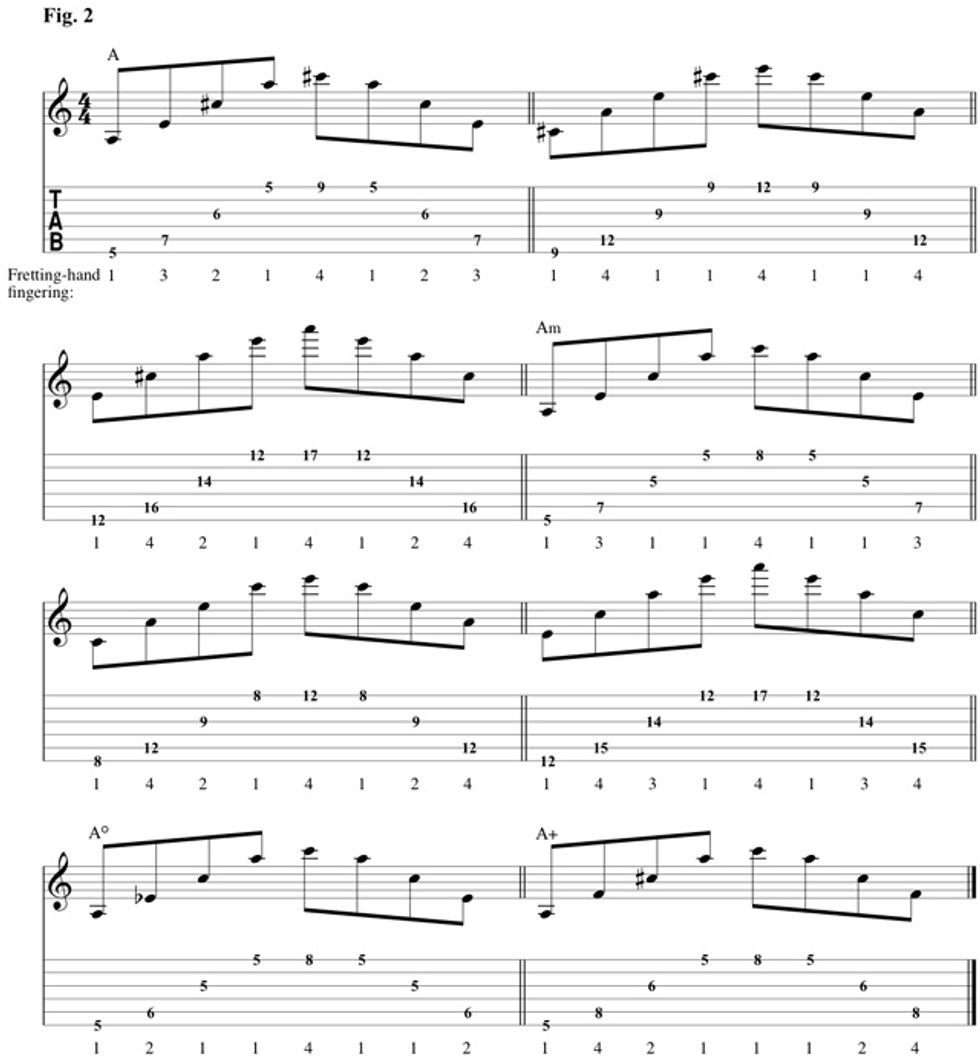
Now that we have a few shapes under our fingers we can start to create some musical phrases. In Fig. 3 we use a root-position B major arpeggio and combine a few intervallic skips and slides.
or download example audio: fast - slow
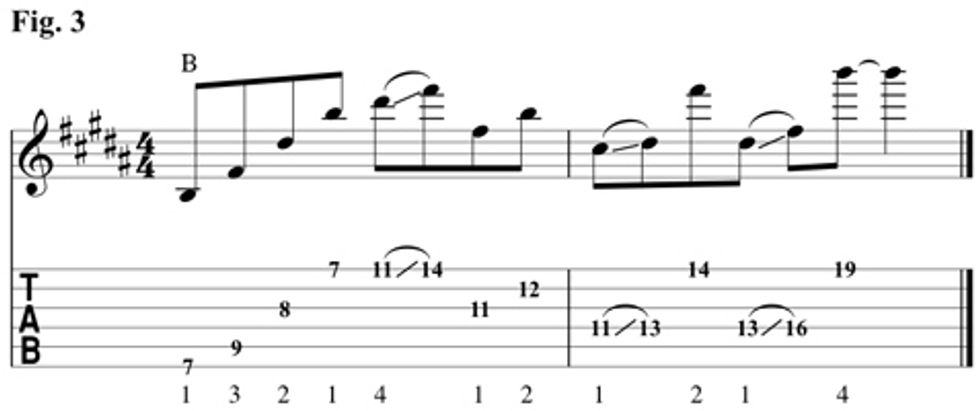
In Fig. 4 you can see how to connect a few different arpeggios through a chord progression. In the first measure I am using an ascending D minor arpeggio and a descending F major arpeggio. The remainder of the sequence combines two different inversions of the C and Ab major arpeggio, and finally closing the Lick with a C# diminished arpeggio and ending on a D power chord.
or download example audio: fast - slow
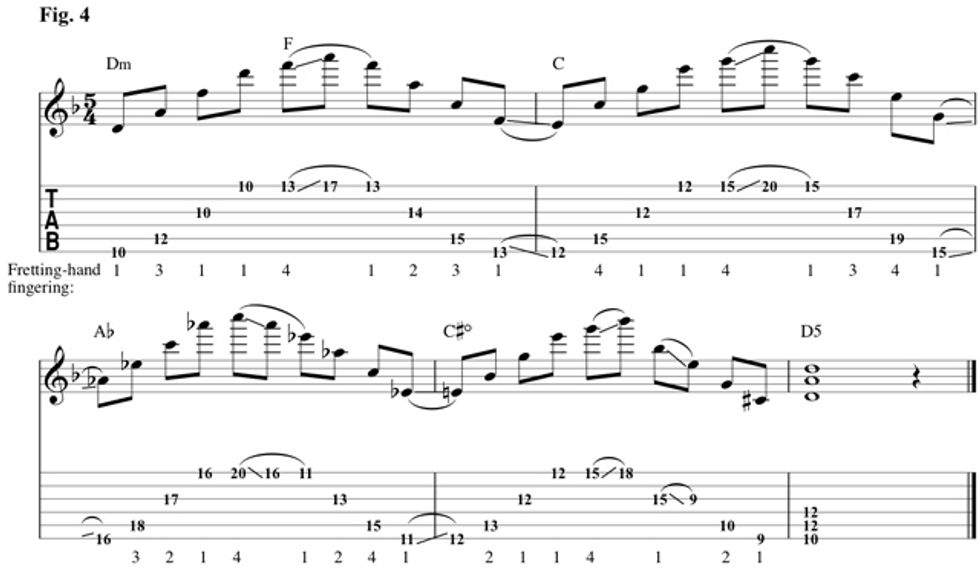
We move over to the C Lydian mode (1–2–3–#4–5–6–7) for Fig. 5. We combine a C major arpeggio along with a D major arpeggio in order to create the Lydian sound. The second measure continues with a both arpeggios in first inversion and ends with a tapped note on the 1st string.
or download example audio: fast - slow
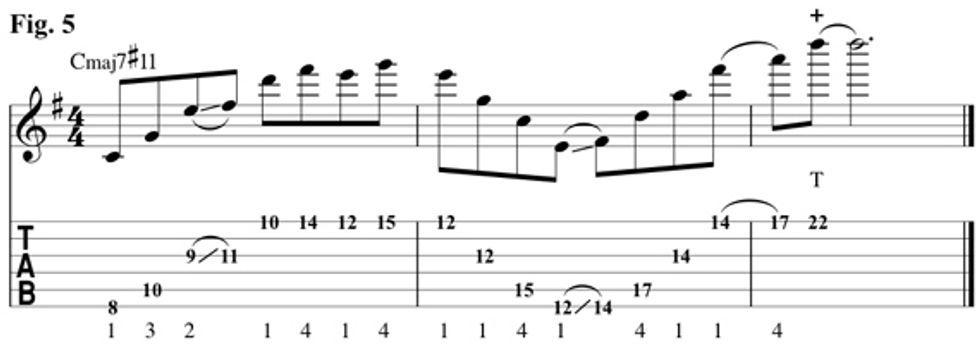
The goal is to develop and write new musical ideas that don’t sound like exercises or simple ascending or descending patterns. Use these ideas on more linear lines by displacing notes to different octaves. This will not only be a great technical and musical challenge but also define your own sound as a guitar player and musician.
German Schauss is a guitarist, composer, author, and educator who teaches at Berklee College of Music and the LA Music Academy. He performs and tours as the leader of his own band and with other internationally known artists. Schauss writes music for commercials, TV, and video games, and is the author of Shredding Bach and The Total Shred Guitarist. For more information, visit germanschauss.com.





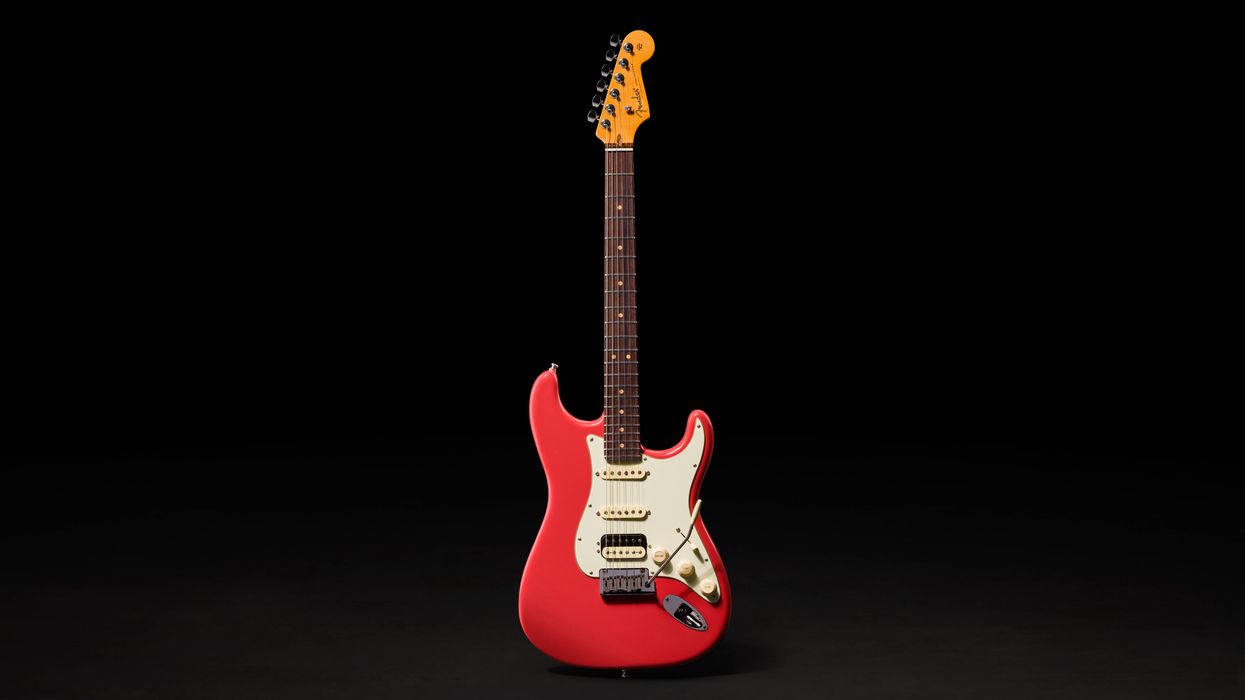
![Rig Rundown: AFI [2025]](https://www.premierguitar.com/media-library/youtube.jpg?id=62064741&width=1245&height=700&quality=70&coordinates=0%2C0%2C0%2C0)
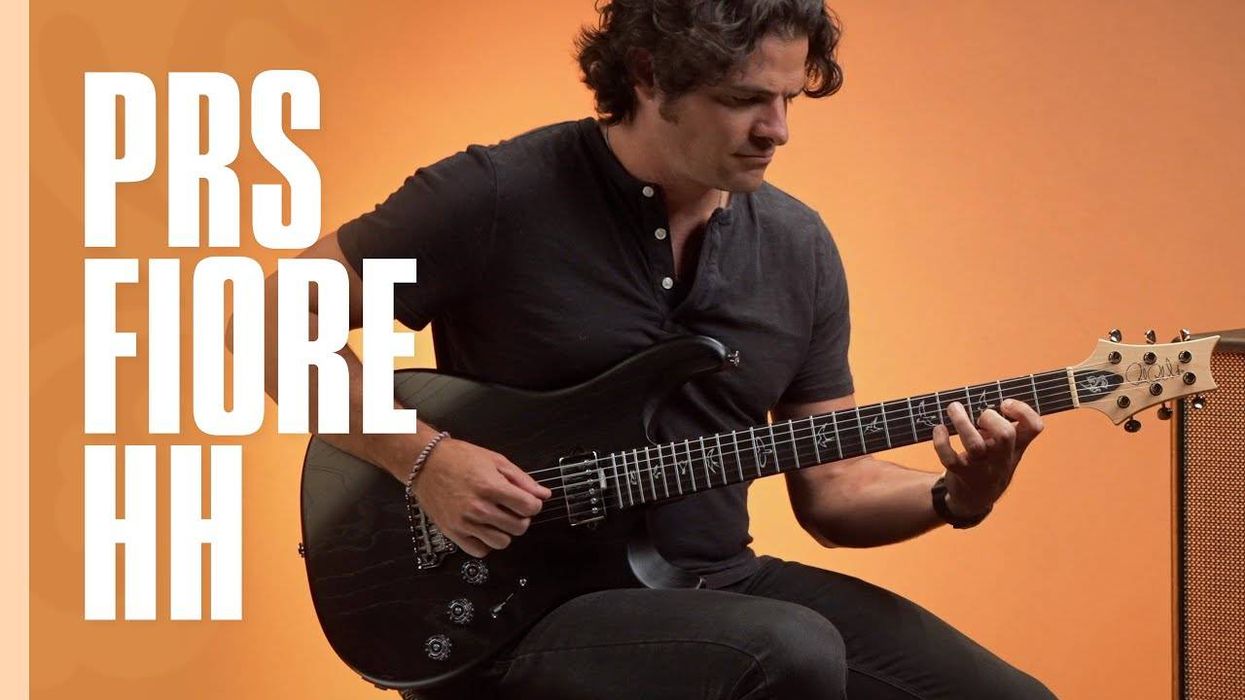

![Devon Eisenbarger [Katy Perry] Rig Rundown](https://www.premierguitar.com/media-library/youtube.jpg?id=61774583&width=1245&height=700&quality=70&coordinates=0%2C0%2C0%2C0)













